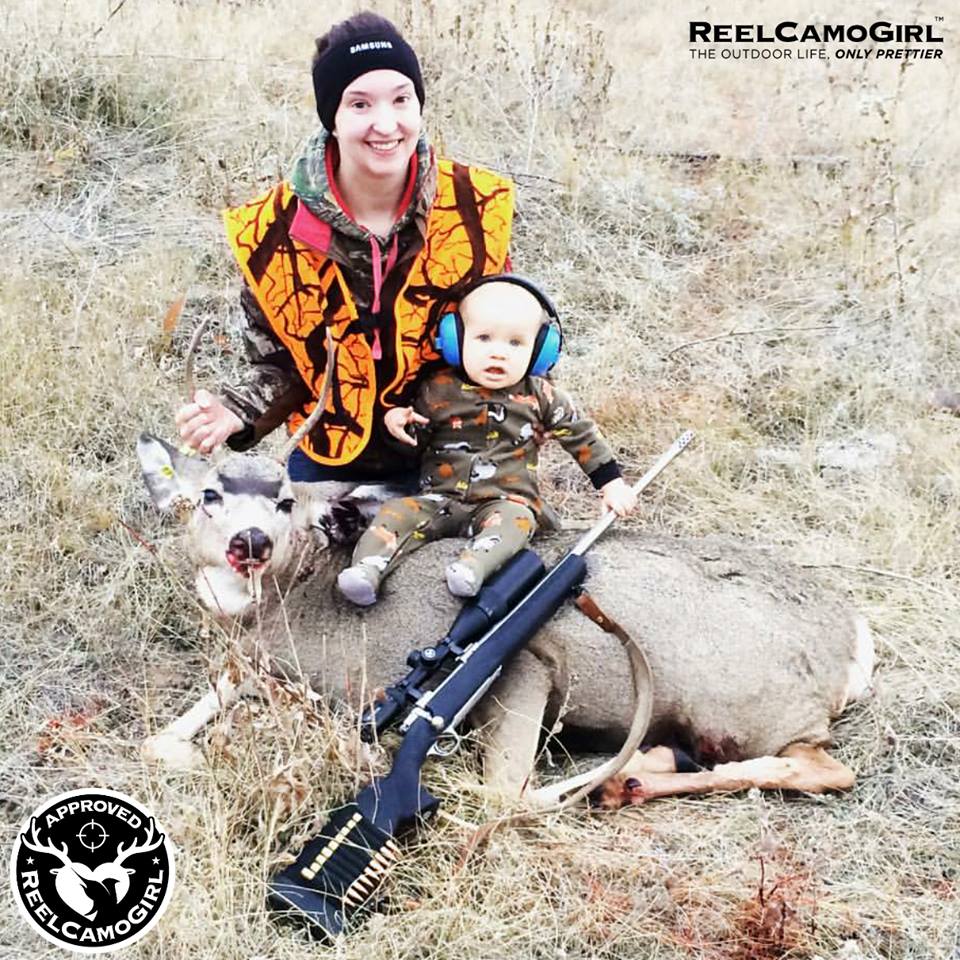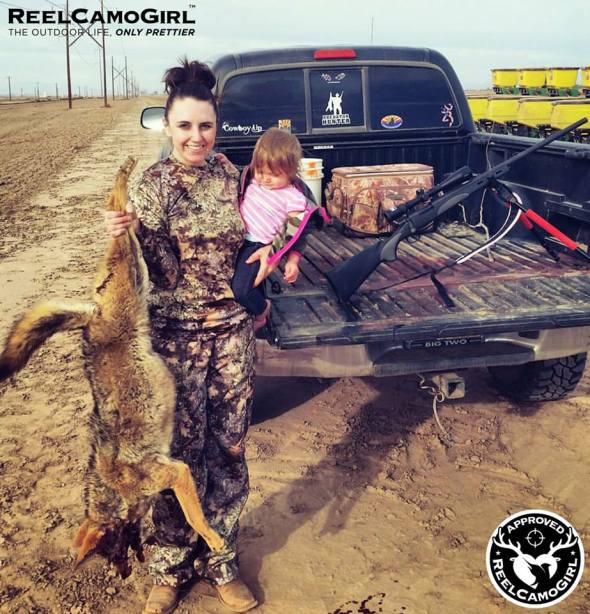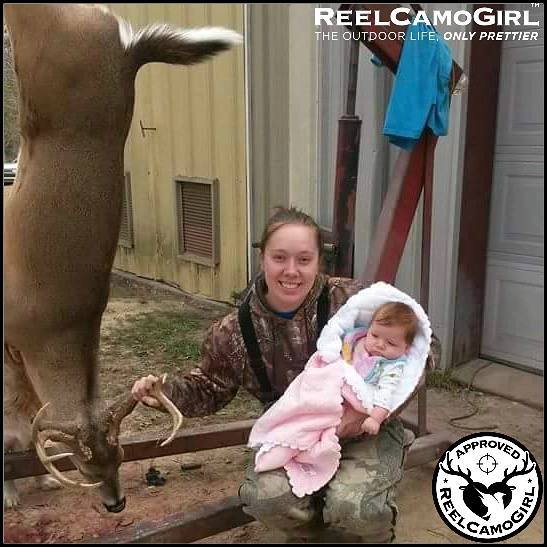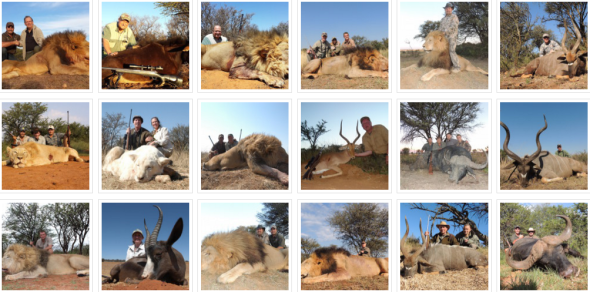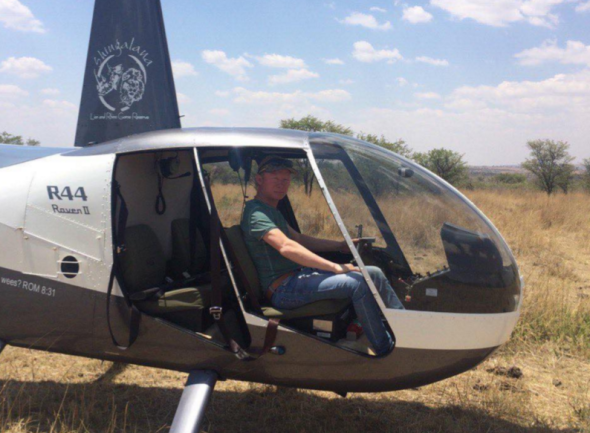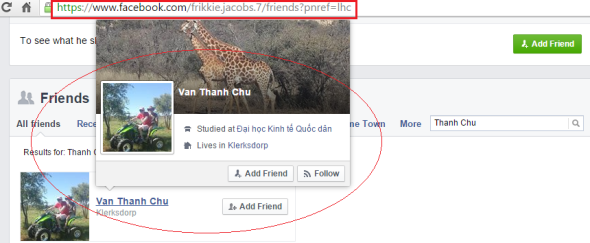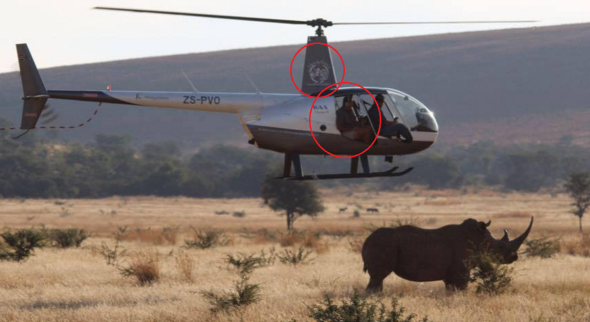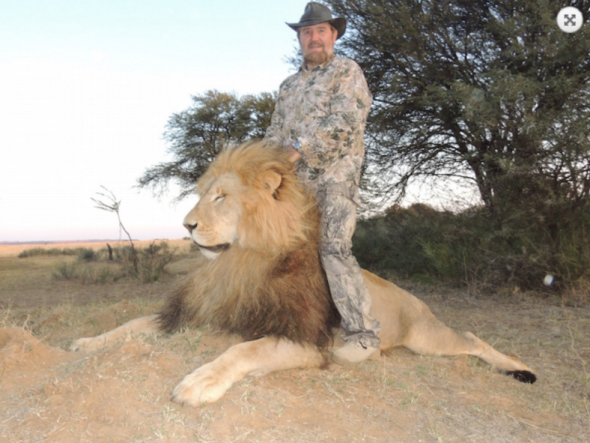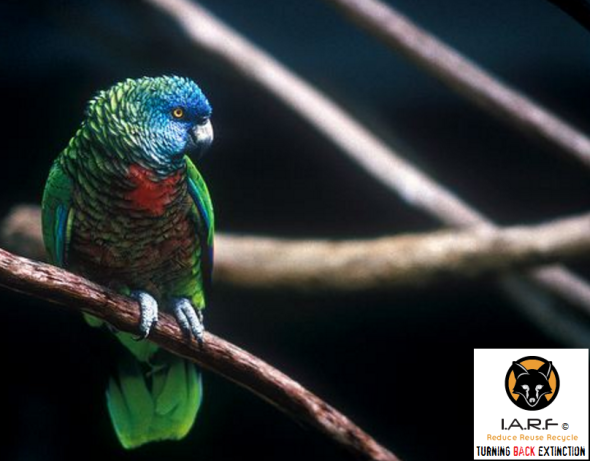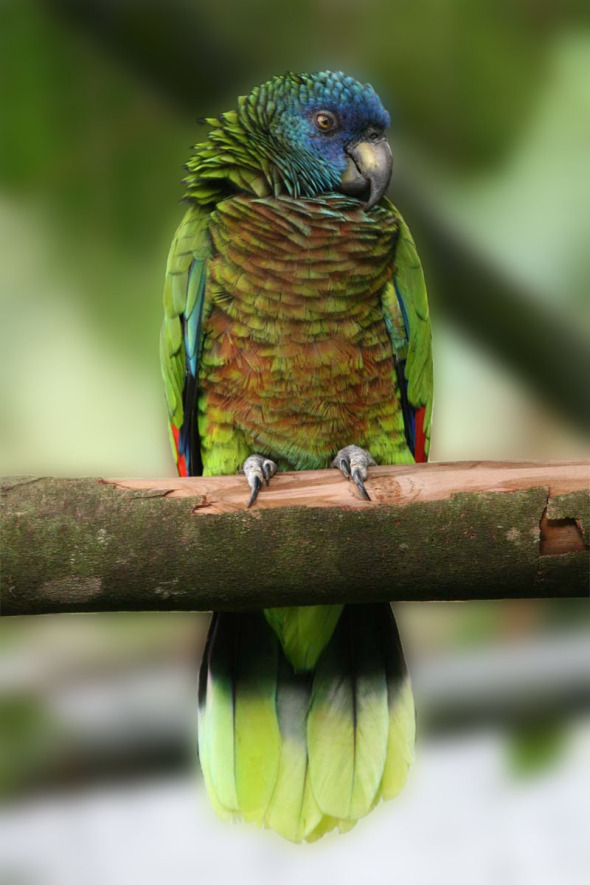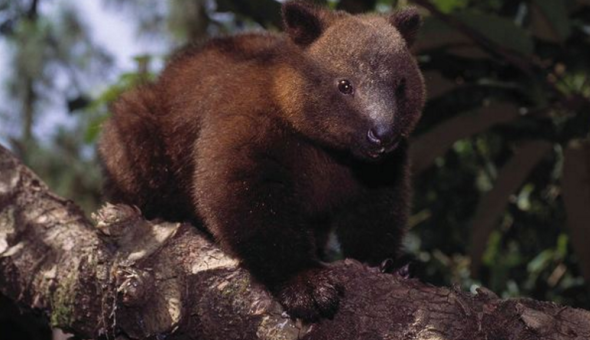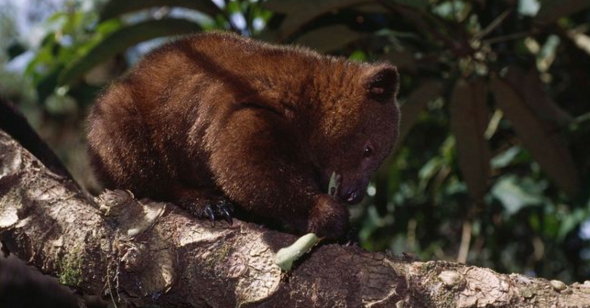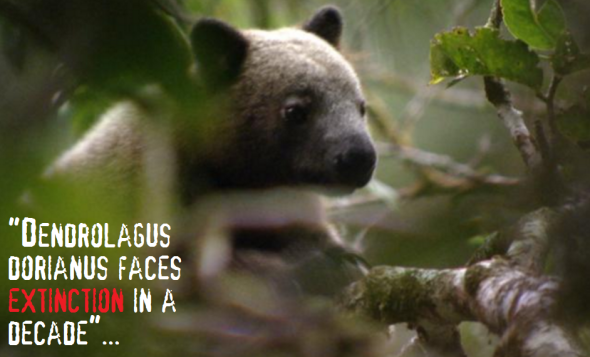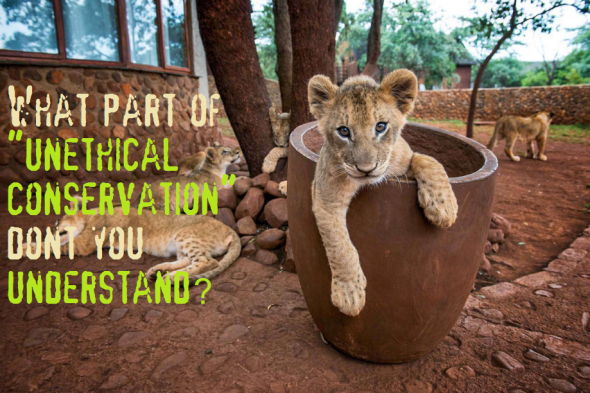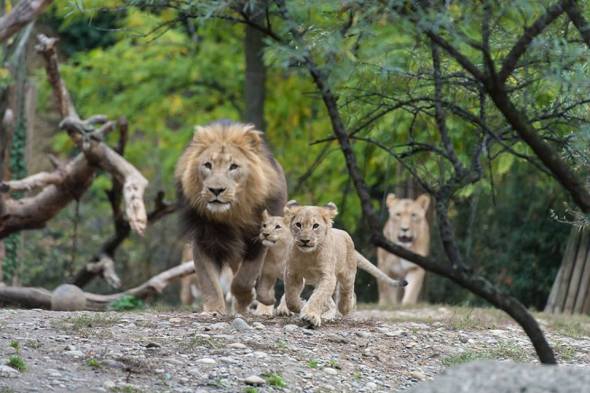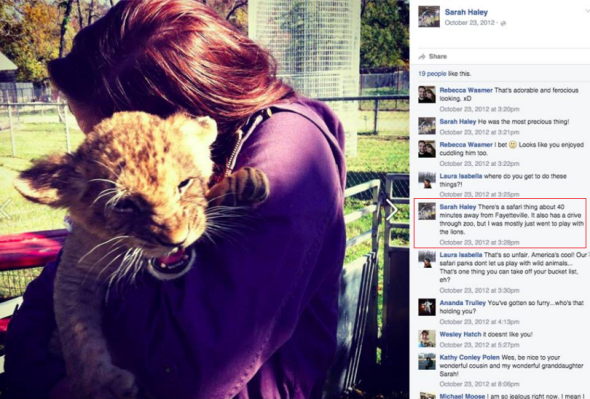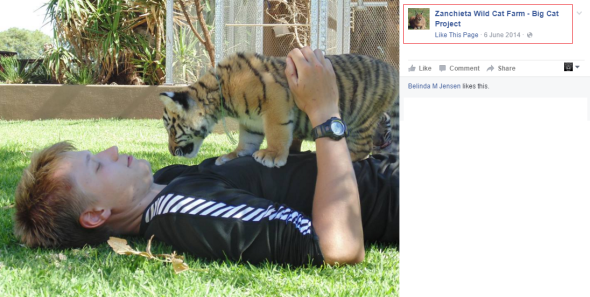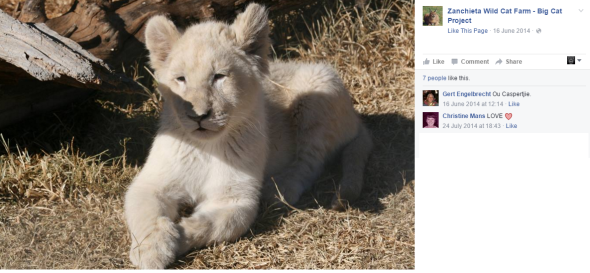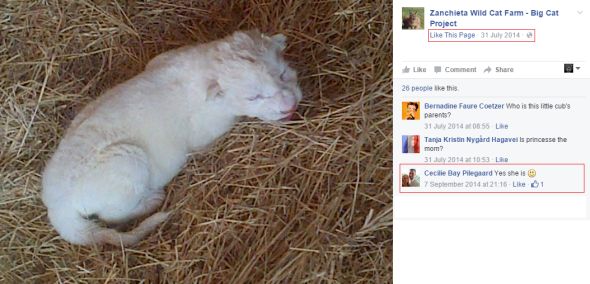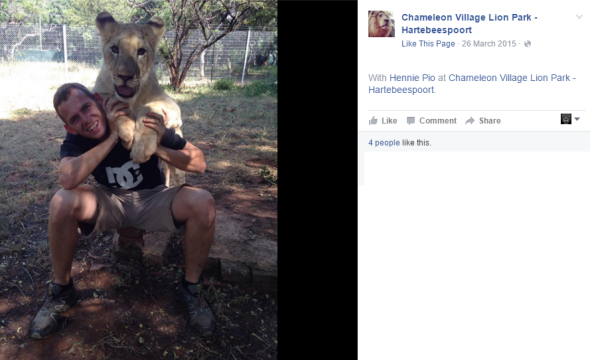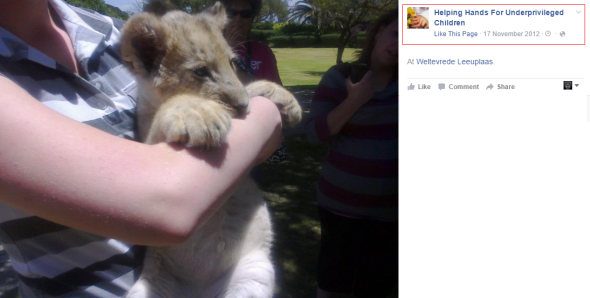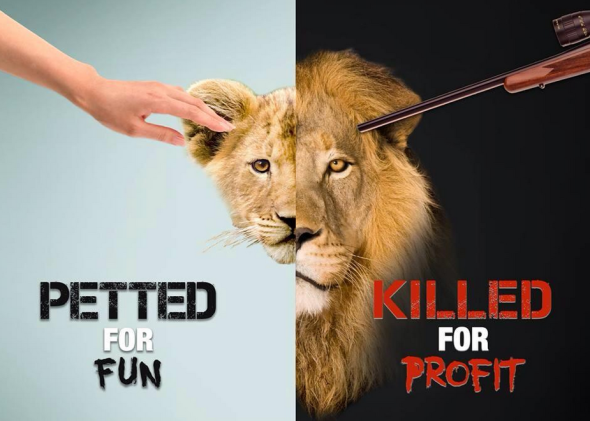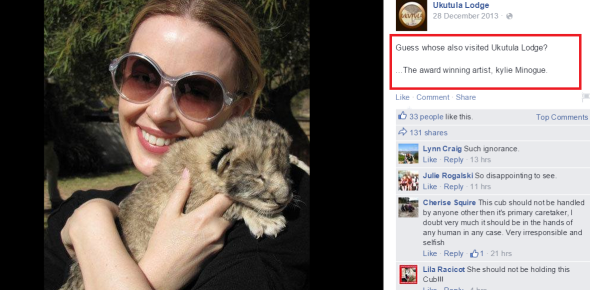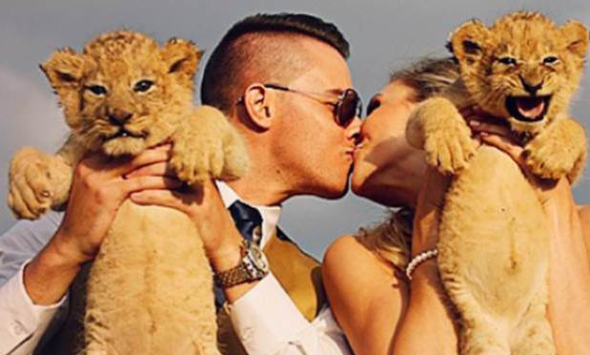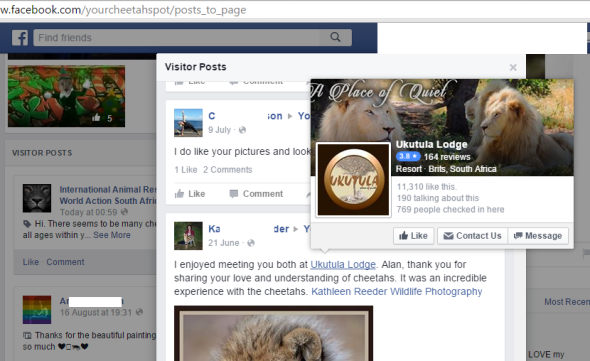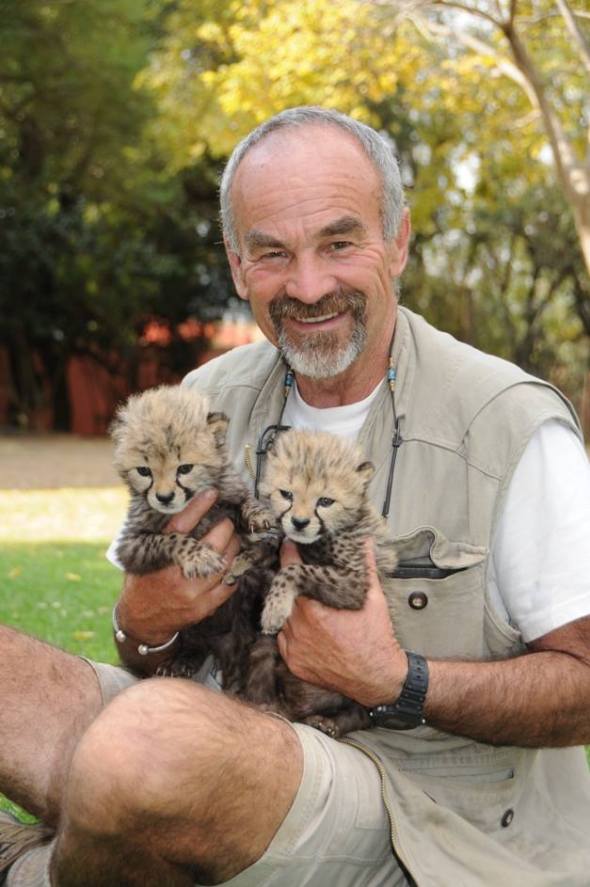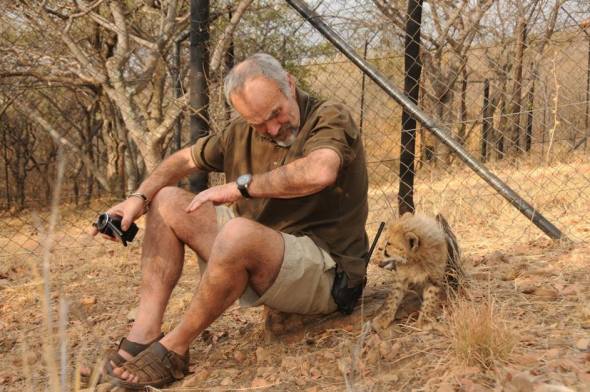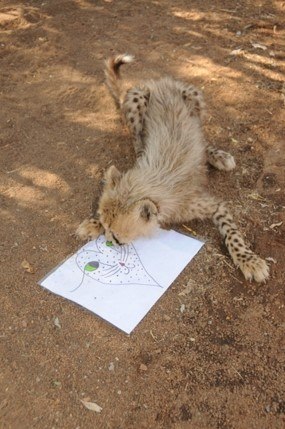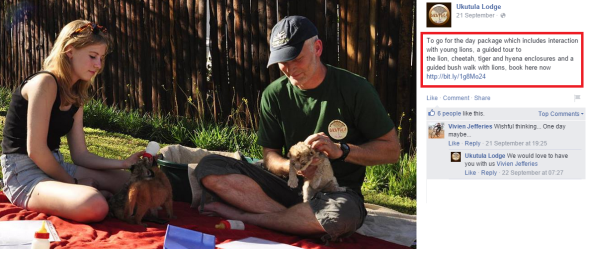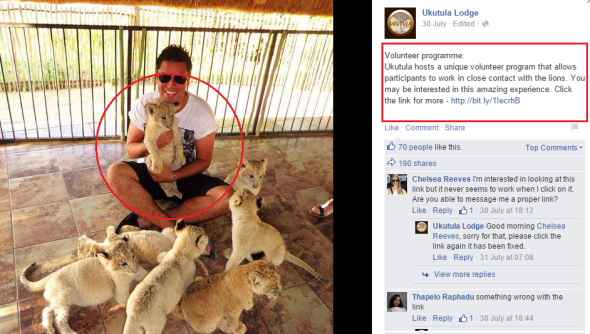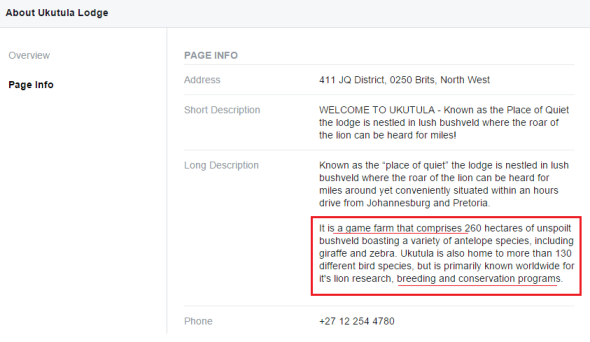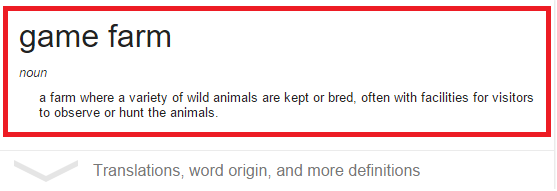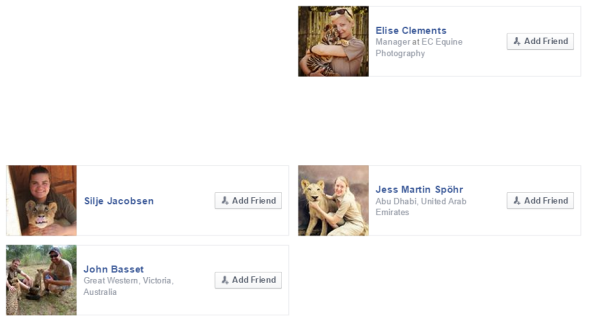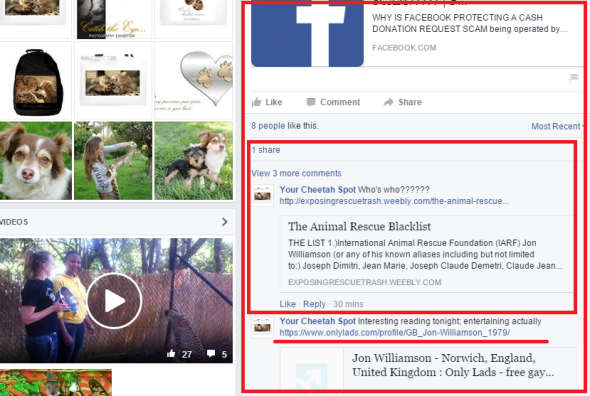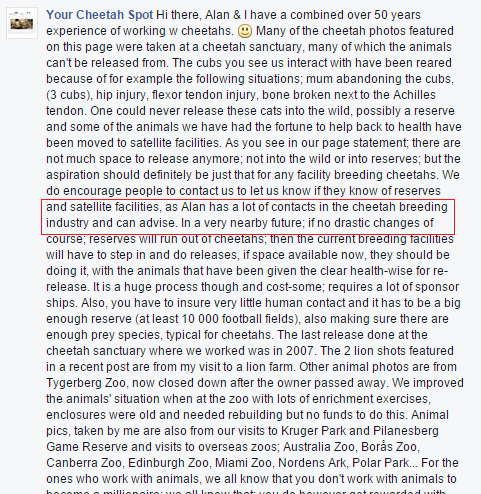WHY ARE WE STILL HUNTING RHINOS FOR | WHEN NO AMOUNT OF FUNDING HAS REDUCED POACHING?
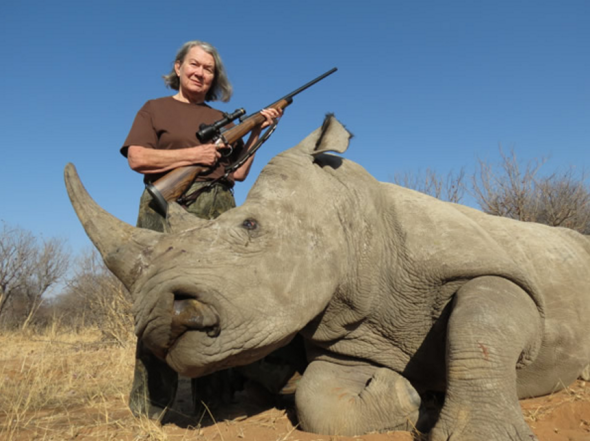
WHY ARE WE STILL HUNTING RHINO?
Why are foreign and native Africans still trophy hunting Rhinoceros for, when no amount of funding generated from these hunts has actively decreased poaching? Image credit: (Mrs Janice Hull, Limcroma South Africa).
Over five years ago I and a group of dangerous game hunters (DGH’s) were involved within a heated debate relating to the money allegedly generated from rhino hunting. The question I asked (and continue to ask) was: “Why are we still hunting rhino for when the money generated from these hunts doesn’t appear to be having any affect whatsoever on decreasing rhino poaching or increasing conservation efforts and security for African rhinos”? (Image above: Hunter - American Janice Hull).
The answer[s] I received were mixed opinions, abuse, and lies. I aimed this question at a number of professional hunters - (PH’s) working in South Africa, and Namibia most of which were American. While the vast majority of dangerous game hunters stated money raised from hunts was directed back into rhino conservation, I’m still after five years questioning where this money is actually going because rhino poaching is not decreasing whatsoever?
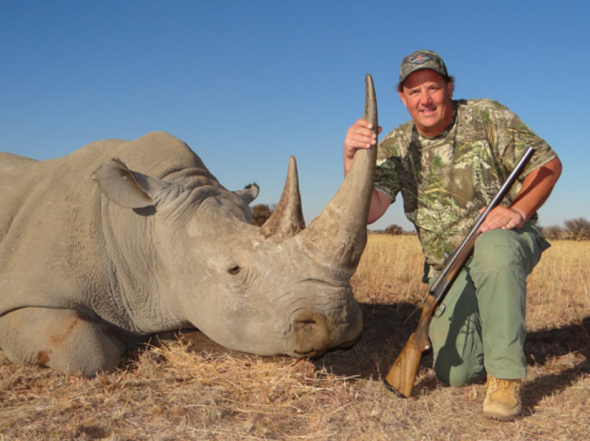
Image Credit: Trophy hunter Mr Loddie Naymola
Since 2008 poachers have slaughtered a staggering 5,940 Rhinoceros - most of which have been poached within South Africa’s flagship park identified as the Kruger National Park. From the year of 2007 rhino poaching figures began increasing rapidly. A total of 13 rhino were bludgeoned to death in 2007. Meanwhile in 2009 South Africa lost a further 122 rhinos (due to poaching).
However come 2011 we really began to see poaching figures rise, come the end of December 2011 a whopping 448 rhinos had been slaughtered by poachers to fuel the Asian demand for pseudo rhino horn medicine. Come 2013 figures shot through the roof resulting in some 1,003 rhinos poached stated the Department of Environmental Affairs come 2013 December end. Then the largest stats were reported back in 2014 of which South Africa lost some 1,215 Rhinoceros to poachers. Yet ‘hunting revenue is preserving our ionic species’?.
Unfortunately at some point from 2014-2016 the Department of Environmental Affairs Minster Honorable Edna Molewa placed a complete ban on the public reporting of any rhino poaching figures, there was no reason as to why this ban was implemented, of which to date still remains in place. Coincidentally (2015’s poaching statistics) had decreased somewhat - of which come December 2015 some 1,175 rhinos had ‘allegedly been poached’. Isn’t that coincidental, a blanket ban on poaching figures is ordered, then come the next year a decrease is seen!.
SOURCE: POACHING STATISTICS.
The SOUTH AFRICAN DEFENCE WEB stated back in January 2016 that a ‘lack of rhino poaching information was negatively affecting anti poaching’. However despite the governmental blackout on rhino poaching incidents numerous organisations such as ‘Stop Rhino Poaching and ‘Outraged South African Citizens against Poaching’ had reported via media, press and anti poaching reports a small rhino poaching decline.
However both of these organisations didn’t obtain their reports from the government, or did they?. So last years poaching stats could indeed be higher than what has been stated in the public domain. Furthermore both Facebook/Online groups/NGO’s share there statistics openly. So in all honesty there is no evidence whatsoever to prove a poaching decline from 2015 has occurred. Moreover and as explained - I myself find it awfully suspicious that since the 2015 poaching report blackout by the South African government - poaching stats just coincidentally decrease like that?.
Elise Daffue whom ‘allegedly runs some form of rhino intelligence group’ (on Facebook - identified as Stop Rhino Poaching), and not in the actual field, stated: “The drop in kills is testimony to the huge effort being made on the enforcement side. Environment Asset Protection strategies have been formulated and implemented over the past three years, guiding the strategic and operational plans nationally – from the ranger in the bush who detects the spoor to the prosecutor who fights that bail is denied. Keeping the numbers down depends entirely on good field work and reserve security, good investigations and good convictions”
While Elise Daffue has stated there was a drop in rhino poaching due to a “huge effort being made on the enforcement side” there remains no evidence whatsoever proving there has been a decline in rhino poaching from 2014-2015. Moreover if there is evidence where has this data come from?. Furthermore whenever we see hunters and ‘animal lovers mingling together’, regardless of what you state your organisation is and does - alarm bells begin ringing, especially coming close to the next CoP summit.
The Founder of Stop Rhino Poaching is friends with a hunter identified as Gustav Collins who runs the Mattaniah Game Reserve Furthermore Elise Daffue is also associated with the individual known as Simon James Naylor who is the Conservation Manager for Phinda Private Game Reserve of which has connections to various hunting organisations and the (WWF) that supports sustainable hunting of Rhinoceros within South Africa and Namibia. Finally (among many others) we have Mr Mark Lautenbach who works as a Specialist Freelance Guide at Ukuthula Lodge. Elise Daffue founder of Stop Rhino Poaching is also friends with a Department of Environmental Affairs worker, and numerous other governmental bodies, police and hunters.
While the above details may not seem overly important, when we’re trying to locate data on hunting statistics, money generated from these activities and more, suspicions are raised when we locate so called professional organisations that are connected to numerous hunting organisations; and institutions such as ‘petting farms’ I.e Ukutala Lodge that has connections with the canned hunting industry and, has featured in a (Blood Lion documentary).
So as one can see it all becomes rather confusing when all we want is upfront and honest answers, however when we ask questions and later find out there are numerous connections to the hunting and possibly ‘pseudo hunting trade’ will we even obtain a serious, straightforward and honest answer? When we’re lied to by hunters, how can we possibly trust Non-Governmental Organisations that are aligned to the very people whom are lying, and are hunting our rhinos while pretending to be so called conservationists? Moreover we (the organisation) do not believe there has been any decline whatsoever relating to rhino poaching. We do though believe that this so called ‘decline may be playing a role in this months CoP17 Summit’ relating to rhino horn legislation.
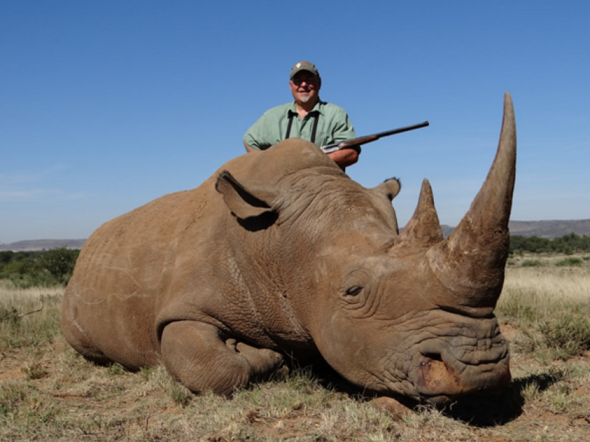
Image Credit: European trophy hunter, Mr Dennis Schemmel
Back in July 2016 it was reported that Rhinoceros poaching was finally without a doubt at ‘tipping point’. South Africa has seen the largest poaching rates recorded at some 72% from 2011-2015. Namibia recorded a loss of 10.8% from 2012-2015. Zimbabwe recorded a loss of 3.1% from 2012-2015. Kenya has recorded a loss of 4.4% from 2012-2015. Finally ‘other African range states mainly in Central Africa’ recorded a loss of 2.5% from 2012-2015.
While its been reported that some 25,000 Rhinoceros remain on the African continent - a depressing near six thousand have been poached all over the continent from 2012-2015. Yet hunting revenue from one of Africa’s most expensive game animals is allegedly reducing poaching? How is this possible, when we’ve lost so many rhinos, and reports from the Global Initiative have confirmed ‘rhinos are at tipping point’.? Furthermore how can the hunting community continue to state that revenue from rhino hunting is helping to secure the rhinos future when 1. It clearly isn’t due to poaching statistics increasing, and 2. The majority of hunters today are now supporting an international rhino horn trade ban lift?
The Global Initiative stated: “Dozens more rhino have been shot in so-called “pseudo-hunts”. Across Europe, castles and museums have been raided by criminal gangs in search of rhino horn trophies. And in the United States, businessmen, antique dealers – even a former rodeo star and a university professor – have been implicated in the illicit trade”. Driven by seemingly insatiable demand in Southeast Asia and China, rhino horn has become a black market commodity rivalling gold and platinum in value.
SOURCE: GLOBAL INITIATIVE.
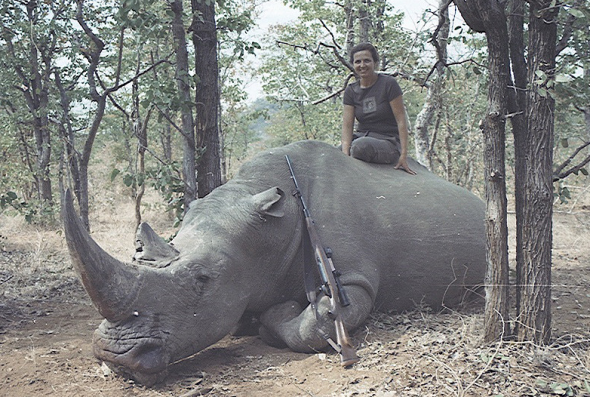
Image: Female rhino hunter, origin of hunter unknown and name. South Africa?
To date there has been very little forthcoming information in relation to revenue generated from African rhino hunts, and where exactly this hunting money is going. Furthermore with rhino poaching still increasing, and tipping points now recorded by ‘various trusted organisations’ the question must now be raised why are we still hunting Rhinoceros?
From the 1940’s tiger hunting was common among many international and local tourists in India. However so too was tiger poaching. It was alleged that revenue from tiger hunting was actually helping to preserve the tiger species and other mammals too. Unfortunately this turned out to be complete codswallop. Then in 1973, the Indian government finally under the orders of Prime Minister Indira Gandhi banned tiger hunting due to so many tigers being poached - and legally hunted at the same time. Had Prime Minister Indira Gandhi not instigated ‘Project Tiger’, the tiger would have gone extinct way back in the 1970’s.
SOURCE: PROJECT TIGER.
In the last 50 years the tiger population in Asia has plummeted from 100,000 to about 5,000. The number of tigers is dangerously low, and the conservation of the world’s remaining tigers is of global concern. Now, in this volume, 40 world authorities on tigers from Asia, Europe, and North America have summarized and identified the management, conservation, and research needs for this endangered species. Before Project Tiger was implemented tiger populations were being hammered. The same identical hunting and poaching behavior before Project Tiger can now be witnessed in Africa - primarily in South Africa where rhinos are also being hammered both by hunters, poachers and pseudo hunters. Does that ring alarm bells among the many FAKE NGO’S out there?
International Animal Rescue Foundation Africa undertook various searches relating to rhino hunting and revenue generated from these hunts within South Africa. What we found was from 2005-2015 a total of 330 ‘White Rhinoceros’ had been legally hunted from 2005-2015. The minimum hunting price was exactly $50,000(USD). While the maximum hunting price was exactly $150,000(USD). It was found that from 2005-2015 and based on the assumption these were (white rhino hunts only) and, taking into consideration the minimum price first. Revenue generated from rhino hunting at the price of $50,000(USD) resulted in an estimated total $181,500,000 million - that’s $181 million(USD) raised from hunting. Meanwhile, and taking into consideration the highest price (being $150,000(USD) a total of $554,500,000 million was generated.
While we cannot place these two equations together and provide a factual sum because we don’t know how many rhinos were legally hunted at each individual price, the sheer fact that millions of dollars has been generated from 2005-2015 should be enough to explain that something isn’t quite right here. Furthermore these figures are based on the assumption these were white rhino hunts,
MINIMUM HUNTING PRICE: 2005-2015 = $181,500,000 million(USD)
MAXIMUM HUNTING PRICE: 2005-2015 = $554,500,000 million(USD)
SOURCE: HUNTING REVENUE.
SOURCE: REPORT TROPHY HUNTING.
To date (and as you can see within the sourced links above) there still hasn’t been a single reliable report that confirms just how much money is being made from trophy hunting in South Africa. The only so called reliable report (which is about as reliable as a chocolate teapot) and, being the only report to surface thus far stated that $200 million(USD) was generated from the years of 2010-2011 (in regards to all South African trophy hunts)? Who number crunched these figures, who even dared to come up with such an absurd low revenue income? I would also like to remind hunting organisations, just because you don’t have to tell us what you’re making, we can contact other organisations/institutions, locate prices, we can phone and email. Eventually we’ll find the truth!
Now either our expert eyes and our mathematical friends are missing something here, or journalists media and the pro trade lobby are forgetting that despite hunting revenue being made pubic. Environmental Scientists can research CITES trophy hunting statistics, then locate the common maximum and minimum price, and the number of rhino trophy heads exported/imported. So as one can read above just from the years of (2005-2015 - millions was made just from Rhinoceros hunting). Moreover who ever came up with the 2010-2011 sum of $200 million USD clearly is missing a lot of money off here, and needs to undertake a mathematical course too?
Rhinoceros hunting is by far the biggest money maker within the hunting business (most of this money is made in South Africa which hosts the largest rhino populations on the planet). Furthermore it just seems too coincidental that from 2010-2011 literally every hunting organisation that’s promoting/advertising rhino hunts has mysteriously removed their prices.
Trophy hunting of rhino is strictly regulated. Every year a total of five (black rhino) can legally be hunted within each of Namibia and South Africa, which totals to a maximum of (ten) per year - five per country. Furthermore in South Africa and Namibia one white rhino can be hunted by one hunter per year - that’s one rhino per hunter every year. Unfortunately there remains no further hunting revenue and data from the years of 2014. Its been estimated by the National Geographic based on the United States Fish and Wildlife report that the United States imported a total of 328 white rhino trophies from South Africa from the years of 2005-2014. Meanwhile a total of 7 white rhino were hunted and subsequently imported to the United States from Namibia from the years of 2005-2014.
SOURCE: NAT GEO HUNTING DATA.
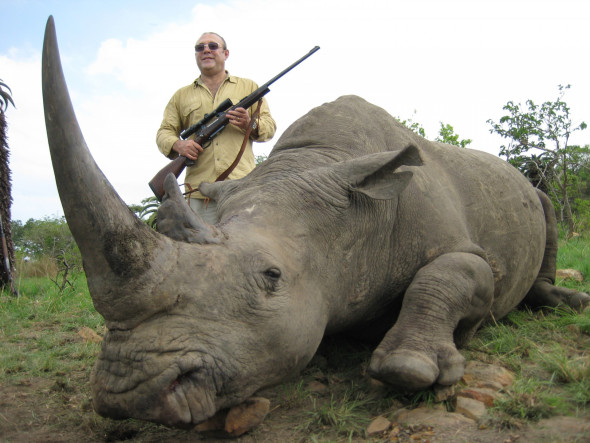
Image Credit: Rhino hunter Alexander Tseytlin
Black rhino hunts have provoked much controversy over the past five years mainly because black rhinos are actually listed as (critically endangered), hence why only five black rhinos can be hunted per year in South Africa and Namibia. Since 1996-2011 the species has been listed as near extinct on the International Union for the Conservation of Natures Red List. Fortunately due to ‘private farming conservation efforts (not wild efforts) the species has allegedly and gradually increased (primarily due to hunting?)’. Both private and wild populations are believed to be increasing within South Africa and Namibia placing the total species population count from 2010 at 4,880 black rhinos.
SOURCE: IUCN BLACK RHINO.
The only reports that we ourselves can offer in regards to black rhino trophy is that of media and press reports that have documented on large scale bidding for black rhino hunts. In January 2014, Corey Knowlton bid $350,000 for a permit to hunt and kill a black rhino in Namibia (Source: Corey Knowlton). Back in June 2016 Namibia offered up three of its black rhinos to trophy hunters. While the price has not been documented its most likely be in the region of just over $1 million(USD) for the three Black Rhinoceros (Source: Namibia black rhino hunt).
Meanwhile back in 1996 a game rancher named John Hume paid about $200,000 for three pairs of endangered black rhinos from the wildlife department of the South African province of KwaZulu-Natal. Among them was a male who would come to be called “Number 65,” and whose death would play a central role in the debate about conservation.
When the black rhino bull arrived, Hume’s farm manager — a burly Zimbabwean named Geoff York whose typical mode of dress is army boots and a pair of purple shorts — tranquilized him, clipped two notches in his left ear and two in the right, and gave him a number: 65. Mr John Hume later picked Mr Peter Thormahlen to organize the killing of ‘number 65’. The price was set at a $25,000 deposit on a $150,000 fee for a seven-day hunt.
Most of that would go to John Hume - the very man that is today advocating for an international legalized trade in rhino horn and has connections to a wide number of organisations such as, WWF, IUCN, CITES, The Department of Environmental Affairs and numerous other figures. Then on July 23rd 2005 Thormahlen and his client with John Hume tagging along proceeded on foot. Suddenly the rhino noticed them and rose from the dirt. The client pulled the trigger, and the first bullet pierced Number 65’s skull. The rhino, still standing, turned. A second bullet hit, and the rhino dropped dead. (Source: John Hume Rhino Hunt).
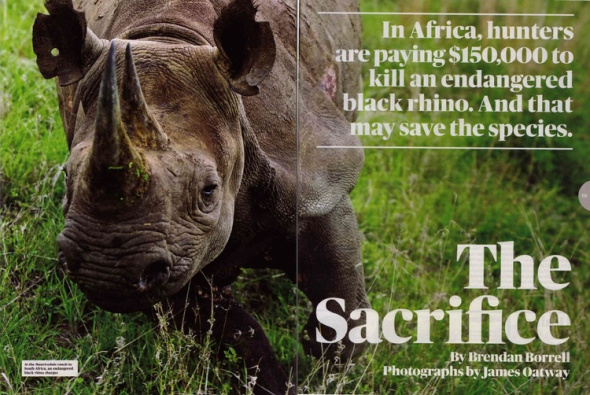
Source: The Sacrifice, please click the source tag for more info
As you can read there is a staggering amount of money parting hands to hunt both black and white rhino. Yet poaching is still skyrocketing? South Africa has lost from 2008 almost 6,000 rhinos to poachers. Back in 2014 Namibia lost a total of 24 rhinos to poaching, then come 2015 a whopping 60 rhinos were poached. (Source: Poaching stats Namibia).
So the question still remains just what exactly is all this money going towards, can each professional hunting organisation prove to me, my organisation and the public that the money generated from rhino hunting is indeed being used to fund anti poaching operations, security, conservation, education, awareness and horn poisoning? (Etc).
While I’ve been extremely silent on this issue too since 2011 I’m going to make it pubic now. I dislike the fact that a ‘prominent South African game hunter’ is involved with the Rhino Orphanage. Back in 2011 we (the organisation) were going to submit funding for scales and equipment, however when running a trace on whom ran the main website, down to a trace on that individuals Facebook page, and more we later discovered a ‘silent partner’ that is hunting many of the big five..
..So who do we trust when it comes to facts and figures? How can we trust anyone that is stating hunting is indeed increasing rhino numbers when literally every individual and organisation are in someway aligned to one another in South Africa and over the borders? Can the Rhino Orphanage and its ‘affiliate’s’ also prove that every single rhino that’s been saved has been released back into a reserve, and not hunted for sport that clearly from this entire document has proved - no amount of hunting whatsoever is increasing rhino populations!
Hunting operations are indeed expensive. While the price of a hunt may indeed seem high. One also has to take into consideration what the farmer and/or professional hunter has to pay for too. Upkeep of land, maintenance of vehicles and buildings, fuel, service charges for gas, electricity, water, and rent Etc, food and beverages for the visiting hunters, guest house uses, damages to guest houses, travel, firearms (among many other bills). Then of course comes anti poaching being the last bill. Some of this expense can be viewed below.
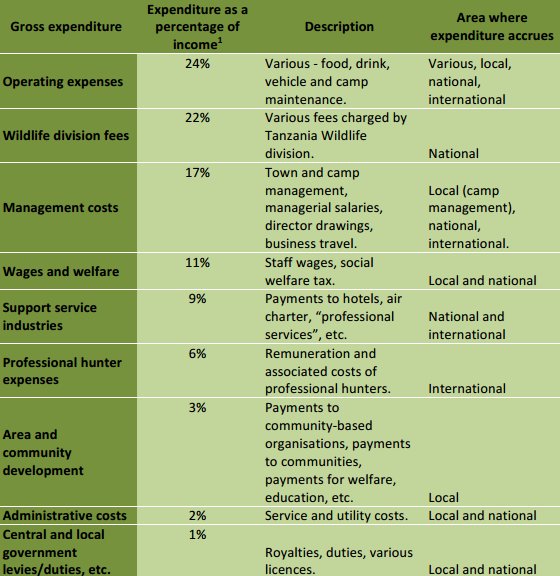
Image: Hunting Charges (Source: IFAW)
While we know that Rhinoceros trophy hunting is indeed expensive, poaching is unfortunately still increasing in various African countries, please do check the sourced links out above, and read that data carefully. The image above with source proves that no big five farmer is taking every single dollar or euro that’s advertises rhino hunting on their site or allows rhino hunting on their property.
So the question remains why are we still hunting rhino for? The question I’ve answered. Rhino hunting is nothing more than a overpaid sport that does nothing whatsoever for conservation and, is not under any circumstances whatsoever contributing to decreasing poaching. All these millions if not billions being made yet here we are still seeing rhinos poached. Finally, and the very best question of them all. If hunting revenue from rhino hunts is not decreasing poaching, how the hell is a so called sustainable rhino horn trade going to decrease poaching? Same money - same prices - going nowhere!
Thank you for reading.
Dr Jose C. Depre PhD. MEnvSc. BSc(Hons) Botany, PhD(NeuroSci) D.V.M.
Master of Environmental, Botanical & Human Science.
Environmental, Botanical and Human Scientist.
Endangered Species Friday | Bubalus mindorensis | Asia’s Next Extinction!
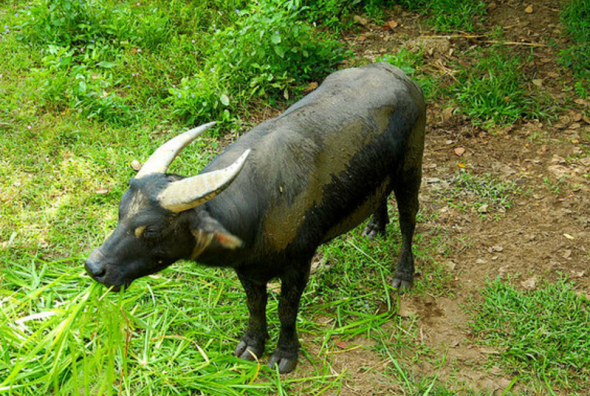
Endangered Species Friday | Bubalus mindorensis
This Friday’s (ESP) Endangered Species Post, I’m touching on a very undocumented species of buffalo that is so endangered - its extremely likely the species will go extinct within the next ten years maximum. (Photographer unidentified).
Listed as (critically endangered) the species was primarily identified back in 1888 by French born Dr Pierre Marie Heude (25 June 1836 – 3 January 1902) whom was a French Jesuit missionary and zoologist. Born at Fougères in the Department of Ille-et-Vilaine, Heude became a Jesuit in 1856 and was ordained to the priesthood in 1867. He went to China in 1868. During the following years, he devoted all his time and energy to the studies of the natural history of Eastern Asia, traveling widely in China and other parts of Eastern Asia.
Endemic to the Philippines B. mindorensis first came to the attention of environmentalists when conservationists began studying the Mindoro Water Buffalo in the early 1940’s of which they found insufficient data relating to the species. Unfortunately from 1986-1996 the species was then suddenly re-listed as (endangered).
Yet the Tamaraw had been known to overseas and native conservation scientists for over THIRTY YEARS of which today we’re now seeing a possible new extinction occurring within the Philippines. How is this possible, when scientists knew about the status of the species, why hasn’t a single zoo removed small populations to house in protective breeding captivity for later reintroduction into the same habitat, or new pastures?
Meanwhile from the year 2000 to 2008 the species was again (re-listed from endangered to critically endangered). Today the Tamaraw is now bordering complete extinction within the wild, and from what we know there is ‘possibly’ no protective captivity projects anywhere around the globe to preserve the species for future reintroduction in the wild. We do hope that we’re wrong?
From what we know based on the last census from 2013 (three years ago) there was noted within the wild only 105 mature individuals remaining. This equates to exactly 105-210 mature individuals (estimate). Within the past three years its very likely we have probably lost half of the remaining populations known, which could mean there is only 52-205 mature individuals remaining within the wild to date.
The species is not known to be fragmented, however populations are still declining. The major threat was once identified as hunting, although ‘allegedly’ isn’t known to be a threat now?. As a scientist and environmental crime CEO I find this very difficult to comprehend, due to the amount of horned ungulates which are being located throughout South East Asia. I must state though: my environmental crimes officers as yet haven’t located any Tamaraw horns or trophy heads.
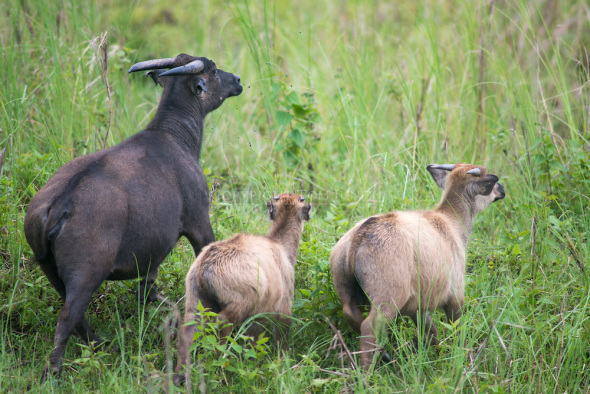
Image: Tamaraw. Credits: Ruisu Fang.
Formerly, Tamaraw were found across the whole of Mindoro from sea level to the high peaks (to over 1,800 m), inhabiting open grassland or forest glades, thick bamboo-jungle, marshy river valleys, and low to mid-elevation forests. The species is currently confined to a few remote areas over 200 m, and is most often recorded in secondary forest and mixed forest/grassland.
Tamaraw are largely solitary, although females occur with offspring. Males and females occasionally associate temporarily throughout the year, which is similar to other bovines species, such as African buffalo, banteng and gaur. The solitary nature of the species is probably an adaptation to forest habitats, where large groups would prove to be a hindrance. Tamaraw feed primarily on grasses, as well as young bamboo shoots, in open grasslands, resting within tall grasses or dense forest. Although formerly diurnal, Tamaraw have become largely nocturnal due to human encroachment and disturbance.
“WE’RE LOSING THEM, AND FAST”
I do find it quite disheartening to know that the Philippines “national animal symbol” isn’t really being preserved or even protected from nearing complete extinction, although there are some projects out there that are helping to save the species from extinction, the problem is of course, as usual, funding!. One would think that a country that’s so wealthy, and a country that has introduced so many animal, wildlife and environmental laws would at least be fighting to protect the tamaraw. From what I have read and heard from the locals - they are trying their utmost hardest, unfortunately not everyone thinks the same as many kind Filipinos.
THREATS
The main current threat to the Tamaraw is habitat loss due to farming by resettled and local people, with a high human population growth rates in and around its remaining habitat. In some areas, fires set for agriculture are a threat to the species’ habitat. Cattle ranching and farming activities pose a number of threats, including the risk of diseases spreading to the Tamaraw from livestock and burning of pastures leading to a reduced number of palatable grass species.
Historically, Tamaraw were hunted for both subsistence and sport, which led to a period of drastic decline in numbers of individuals and populations. Hunting was carefully regulated prior to World War II, but since then a growing human population, logging operations, ranching, and widespread availability of firearms on Mindoro have caused a dramatic decline in numbers.
Since the 1980s, sport hunting has reduced due to a decline in the Tamaraw population, closure of nearby ranches, and more intensive patrolling and awareness activities since the establishment of the protected area. International trade in this species or its derivatives has not been reported. Although protected by law, the illegal capture and killing of this species continues.
While its currently “illegal to poach or hunt” the species “we believe some are still being poached within the Philippines to provide horns to both China and Viet Nam”. As yet there is NO EVIDENCE to back these claims up, however I.A.R.F.A environmental crimes officers have located in Viet Nam a lot of ‘counterfeit Rhinoceros horn’, which when analysed, has proven to us the horn[s] most certainly aren’t from rhinos, but from a buffalo species. So this area of the counterfeit rhino horn trade still needs intensive investigation.
The current plight of the tamaraw is not looking good, and from our own investigations and third party environmental investigations relating to the species - extinction is very likely to occur in around five to ten years (if that).
“THE TAMARAW IS ASIA’S NEXT EXTINCTION”
Thank you for reading.
Dr Jose Carlos Depre. PhD. MEnvSc. BSc(Hons) Botany, PhD(NeuroSci) D.V.M.
Environmental, Botanical & Human Scientist.
Swedish Democratic Treasurer (MP) | Trophy Hunting Threatened Species.
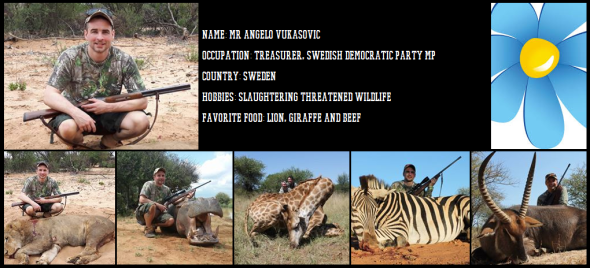
Minister Angelo Vukasovic | Swedish Democratic Party
Two months ago International Animal Rescue Foundation representatives undertook an investigation into the recreational lives of over 100 European Members of Parliament, and parliamentary radical wings. The investigation also focused on individual countries hosting radical party organisations that are in our opinion a threat to the European Union, society and as we believed - our environment and wildlife. The British National Party may want to take note of this; three (BNP) members have been caught red handed hunting wildlife within Africa from 2014-2016, one of the kills relating to a zebra was so barbarically cruel, the professional hunter [PH] had to intervene to put the animal out its misery, yet the BNP are against cruel slaughter?
However the most extreme group (in our opinion) was the Swedish Democratic Party of which some 20.1% of the Swedish public support. Fortunately since we revealed our findings to the press and media in relation to MP Angelo Vukasovic (pictured above) support for the party has declined slightly since going to press on the Sunday, Monday and Tuesday. We wish to thank all the press and media officers that have covered this single story thus far, however be prepared for further revelations, while we take a firm stance against (racism), we also take a bigger stance against cruel canned hunting, that often results in the animals being drugged, left in hideous pain and trauma, before being shot dead and put out of their misery (FOR SPORT)!?
Angelo Vukasovic made no attempt to conceal his past and present horrific hunting practices (which he is now). Furthermore when interviewed by local Swedish press and media, then international press and media, as the story broke, he strangely admitted to ‘canned hunting’. Something many hunters do not admit upfront, simply because they know its cruel, and often results in an aggressive backlash from the community of animal lovers. Vukasovic stated that most of the animals he hunted, including the lions from the Kalahari were fenced in (canned hunts), which we find somewhat suspicious. Did Vukasovic admit to the canned hunting knowing the backlash from the community wouldn’t be as harsh had he admitted to hunting wild male lions, which if proven to be true would see the community of animals lovers gunning for blood. Coincidentally them lion images are the ones that have vanished. All the others remain?
Two of the lions Vukasovic hunted are below. There is no proof that these two lions were hunted within a fenced in zone, no evidence of fences, and as yet no hunting agency coming forward to spill the beans. As explained, and should these two lions turn out to be legally hunted wild lions - then the tables turn because we then have an entire pride affected that may have had cubs, and without the males tending to the prides, the pride and cubs will eventually die thus resulting in further animal deaths. So when we witnessed Vukasovic admitting to the “lesser legal offence” we was was somewhat shocked, yet left suspicious.
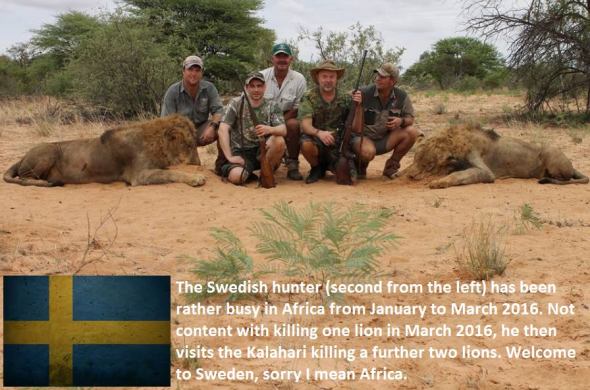
Image: Vukasovic two suspected wild lion hunts.
International Animal Rescue Foundation Africa and of course myself the (CEO) were accused of launching a ‘political assault onto the party’. Far from it. Vukasovic is no different from any other hunter, however in Vukasovic’s case he has a reputation to keep up (or tried), of which he is aligned to the Swedish Democratic Party. This is the issue that many (MP’s) seem to forget, regardless of whether they are in the office on duty, or on holiday (not on duty), an (MP) must at all times keep the parties reputation intact and under no circumstances bring the party into disrepute. The same applies more or less to any domestic civil working contract for 90% of companies around the globe in regards to the general public.
Vukasovic Plays Down the Hunt
In good old hunting fashion Vukasovic played down his hunting activities in South Africa and we believe Botswana. The same old lame excuses were; The hunt was legal; Well rehearsed; Hunting only problem animals; Reducing populations of farmed stock to preserve the remainder; Animals were killed quickly; No harm came to any animal; I ate 80% of all animals hunted. Canned hunting has been well documented as a cruel and barbaric sport where animals such as big cats (E.g) are mostly bred as cubs, petted by tourists, then when older are discarded into the hunting farm. From there they are often drugged, static bait traps are set so no fair chase can occur, and the animal[s] are then shot dead. And here’s me thinking that the Swedish Democrats are against cruel animal killing!?
Animals on canned-hunting ranches are often accustomed to humans and may be native to the area, raised elsewhere and brought in, or purchased from individuals who are trafficking in unwanted or surplus animals from zoos and likely even circuses. Canned hunts are becoming big business. Most of these ranches operate on a “no kill, no pay” policy, so it is in owners’ financial interests to ensure that clients get what they came for.
Canned hunting, which is the hunting of captive-bred lions, has become a huge industry in South Africa. Wild hunting controlled only 1.1% of the lion hunting market in 2010, leaving 98.9% of the market controlled by canned hunting. This industry has helped lift Africa’s total trophy hunting revenue to $200 million per year. South Africa, in particular, has become a hub for the industry, with markedly higher success rates of canned hunts. In South Africa alone, American and European tourists kill around 1,000 canned lions every year. Success for the farm owners comes at the ultimate cost for the lions.
Lions used for canned hunting purposes are bred for the sole purpose of eventually being hunted and killed. The slogan, “Bred for the Bullet”, has become popular amongst those against the practice. Lion cubs are often taken away from their mothers just days after birth, affecting the health of the cub due to lack of natural milk and forcing the mother into another oestrus cycle, making her more receptive to mating. In the wild, female lions will keep their cubs with them for almost two years. By separating the offspring from the mother, farm operators can increase the amount of cubs each lioness has per year. The average lioness used for breeding has around 5-6 litters every two years.
After the lions reach an age at which they are big enough to make attractive trophies, they are released in a fenced area of land for a very short period of time. Some lions have less than a week of this so-called ‘freedom’ until they are hunted. Some lions are even drugged so those paying for the hunt have a nearly guaranteed kill, which is part of the reason the reported success rate of canned hunts is 99.2%. For the entirety of the hunt the lions are at a disadvantage, and with no hope of possible survival, the welfare of the lion is completely disregarded.
International Animal Rescue Foundation Africa has contacted Swedish Democratic Leader Jimmie Akesson (MP) within the past two days calling for an immediate inquiry, however as yet there has been no reply. While we know (MP) Vukasovic is a treasurer for the party, and allegedly holds down another job as a hunt store owner, I the (CEO) am just not buying the fact that Vukasovic was able to fork out over 100,000 euros (just for the hunts alone) - on such a small basic income. Hippos and lions alone fetch up to a combined total of 80,000USD. So either Vukasovic is very wealthy, or as I suspect money has been siphoned off from the the public purse.
Meanwhile Jimmie Akesson (MP) stated in the image below that sustainable hunting in Sweden he and the party supports, however they wish to distance themselves from canned hunting. Unfortunately for the (SD’s) that’s come all too late, the damage has been done, questions are being asked, and very little in the way of answers are being given. Please click the link here https://www.facebook.com/jimmieakesson/posts/10154345838246108 to be directed to Jimmie Akesson’s official Facebook page, from which you can read the message and add your own thoughts to his feeble response.

Image: Swedish Democratic Leader Update 21st June 2016.
Closing, the following video I have left for Jimmie and the general public to view. Maybe after viewing the documentary (SD) leader will suspend the treasurer, failing that we’ll continue with naming and shaming further (SD) leaders that have been caught trophy hunting in South Africa, Zimbabwe, Botswana and Zambia.
NEWS AND MEDIA LINKS HERE:
http://aktuelltfokus.se/jimmie-akesson-stalls-mot-vaggen-efter-nojesslakten-av-vilda-lejon-och-giraffer/
http://www.dailymail.co.uk/news/article-3652343/Lion-tastiest-meat-ve-eaten-apart-giraffe-Swedish-politician-sparks-outrage-South-African-hunting-pictures-posted-line.html
http://www.expressen.se/kvallsposten/sd-politiker-dodade-lejon-och-at-upp-det/
http://www.aftonbladet.se/nyheter/article23038044.ab
OPEN LETTER TO THE [SD LEADER]
https://www.facebook.com/notes/international-animal-rescue-foundation-world-action-south-africa/sverigedemokraterna-open-letter/1073125126100724
Stay tuned for more updates; don’t forget if your a member of parliament anywhere in the EU, we’re watching. If you bring the European Union into disrepute we will name and shame you, your details with evidence will be made public, and we will ensure your role as a member of Parliament is dealt a heavy blow. Police or thugs that try to intimidate us, or try and shut us down; please rest assured that numerous people are working on this case, and you’ll never stop us from revealing such data to the public that have a right to know.. ..IARFA does not take kindly to European trophy hunters wreaking havoc in any country, as a European you was not raised in this way, trophy hunting and canned hunting is not part and parcel of European culture. Pick grapes, grow fruit and vegetables, keep the EUROPEAN UNION in tact, and do not bring us into disrepute.

Have a nice day
Dr Jose C. Depre
Chief Executive Officer.
Parenting & Hunting | Exposing Children to Violence II
TEACH THEM YOUNG | POOR PARENTING
I have tried in vain to not post images about trophy hunting or any hunting, simply because it provokes so much rage, anger, and hatred. However I have yet again violated my own self discipline, because I am angered to the core of witnessing selfish and arrogant parents displaying poor parenting, not forgetting the obvious, teaching their young children during the developmental brain stage, that killing animals is pretty much okay, because mummy and daddy does it.
Violence is violence, and abuse is abuse at the end of the day, killing an animal and allowing your child to watch such horror and gore, or act out is no different to that of placing your child in-front of a (16, 17 18 or 21) age restricted movie, adult film or violent video game. While films and video games are though mostly faked, hunting isn’t. Furthermore while the human brain develops from the ages of 1-21, any such displays of violence, abuse, neglect or harm can heavily imprint onto the child within this developing process. Which in turn can change a child’s thought process and in many cases - corrupt a child’s brain, for how long though depends on the severity of violence exposed.
Violence is ubiquitous and often glorified, and within today’s hunting theater violence is glorified as an acceptable behavior. Hunters may and do argue this, however they must remember that at the end of the day, violence is violence. Whether its killing an animal with a shot gun, cross bow, or breaking a rabbits neck, these acts are still ‘violent’, and they are “acted out”. Then of course comes the ‘glorification’, whereas back in the early 1950’s and 1970’s such acts like the one pictured above wouldn’t be glorified.
Watching a suspense movie, playing a violent video game can often be seen as a form of relaxation, exactly like recreational hunting. Surely there is nothing wrong with this? Evidence is continuing to mount, that these so called “relaxing thriller and suspense movies, action packed and violent video games, down to hunting be it for food or sport” is indeed having a profound and ‘non-relaxing effect’ onto the human brain.
Like I have explained, when such suspense, violence or action packed sport are relayed and projected onto minors within the “brain developmental stage”, such behavior or actions can have a disastrous effect onto the human brain and our way of thinking. Dress it up as much as you want, call it what you like, abuse is abuse, violence is violence. They are both linked.
A study by the Indiana University School of Medicine examined young men and violent media exposure. There were visible alterations in MRI brain scans after only one week of playing a violent video game. In particular, there was a significant decrease in the activation of prefrontal portions of the brain and a greater activation of the amygdala. Now some hunters may disagree here, however lets go over this one sentence again. “Examined young men and violent media exposure”. Violent video exposure or any exposure from anything that is deemed as violent can in both men and women have a profound effect onto the main thought and thinking process. This has also been linked to depression, especially those in countries with little sunlight and poor weather.
From what I am aware, the study conducted by the Indiana University School of Medicine is one of the first such studies of its kind. So its going to be pretty interesting to examine the results when further studies are rolled out worldwide, and if these conclusive reports will eventually prompt governments, media producers, and hunting outfitters to eventually impose restrictions relating to exposing children and minors to violence. The video game above is a prime example of “acting out violence”.
The young viewer states they love animals and would never harm them, yet uses language such as “come here you little bitch, we fucked up, we’ll get our revenge, come on get that mother fucker”. Again some hunters may disagree here, and believe this is nothing more than silly childish banter. The fact is, the video gamer agrees that she loves animals, yet is prepared to kill them within a simulated game. Brain study evidence also proves that prolonged exposure to such violent video games can increase depression, self harm, lower ones thinking process, concentration and see the individual committing a violent act after prolonged gaming. There is also evidence that points to video gamer’s wanting to “do the real thing”. I.e Go out and purchase a gun, and enact the same behavior from that game within real life.
But the findings are intriguing and beg the question: Does an activation of the limbic system and an inhibition of the prefrontal cortex predispose to violent behavior? This is a relatively easy proposition to test and I suspect we will see more studies soon. Meanwhile the University of Alabama conducted an identical study, and that study also showed up exactly the same results from the study conducted in Indiana.
Results from the main Alabama and Indiana study showed violent and aggressive traits didn’t occur soon after watching “violent and aggressive video games”. However violent and aggressive traits did occur some months, to a year after being playing such action packed games. I myself have always tried to explain this concern to hunters when they debate and argue with me. They believe that one violent act doesn’t lead directly to another, and that’s true, which both the studies pointed out.
However, unfortunately, its the “prolonged over and over again exposure to such aggression and violence that eventually does increase violent and abusive tendencies to unfold”. The neurological examination team concluded “The study concludes with a caution for parents that immature and/or aggressive children should not have access to violent films”. Again some hunting families may argue here, and debate profusely that hunting is not under any circumstances identical to that of playing a violent video again.
To a degree the average family hunter are correct, its not identical, however there are many identical features within such games that are played out in hunting I.e: Killing, Abuse, Death, Violence, Murder, Bad Language, Glory and Torture. So theoretically speaking, hunting and exposing ones child to such hunting practices, or allowing a child to hunt, (is a form of violence), and can eventually “over time”, see aggressive and abusive traits played out, all of which is no different to playing an action packed violent video game, or watching continuously many violent, abusive and suspense movies.
The Macquarie University Children and Families Research Center found that children who watch violent movies are more likely to view the world as an unsympathetic, malicious and scary place and that this stimulates aggression. It also suggests children are more likely to exhibit combative behavior while becoming desensitized to violence. Reportedly, the MRI brain scans of children who have viewed film or television violence had a similar look when compared to those who have violently acted out. So we know that children who “act out” within video games in the same manner as “hunting” are more than likely to “act out violence”, than those who simply watch an action packed aggression filled movie.
It is without a doubt that all studies that are being conducted and have been concluded thus far by neurologists, and psychiatrists have shown “children who act out within violent games” all show at a later date brain changes, aggressive behavior, and poor decision making”. Unfortunately there will be deniers in relation to this article, reports and follow-ups. Just like there were deniers that stated five decades ago, smoking doesn’t cause cancer, drinking doesn’t cause liver disease Etc.
Regardless of whether its a video game, watching television or participating down to exposing hunting behavior to minors. When violence is portrayed, over a prolonged period of time. At some point there will be children who’s brains cannot handle the mass degree of violence, that then, unfortunately go out and commit a violent act. The Virginia Tech Research Division stated; “Studies showed students several non-violent movies, followed by super-violent movies. Results indicated violent films can increase hostile behavior”.
Article 1: http://www.research.vt.edu/resmag/sciencecol/media_violence.html
Article 2: http://www.ncbi.nlm.nih.gov/pmc/articles/PMC4227415/
Article 3: http://www.researchonline.mq.edu.au/vital/access/manager/Repository/mq:21163?f0=type%3A%22book+chapter%22
Article 4: http://www.dailymail.co.uk/news/article-2516427/Sandy-Hook-shooter-Adam-Lanza-83k-online-kills-massacre.html
Taking ones child out and “playing or acting out” a violent sport, shooting, cross bow, or just snaring, is no different to sitting your child down in front of a video game that is violent, thus allowing ones child to “act out a violent act”. Shooting an animal is no different to shooting a human. The sooner hunters and governments around the globe understand this, the better. Then we may eventually see a decrease in violent youth behavior.
Dr Jose C. Depre - PhD. MEnvSc. BSc(Hons) Botany, PhD(NeuroSci) D.V.M. Environmental & Human Science
Environmental and Botanical Scientist.
VINPEARL LAUNCHES SMEAR CAMPAIGN | NAUGHTY.
WHERE DID YOU PURCHASE YOUR ANIMALS FROM AGAIN?
The Vinpearl Group fronted by Viet Nam’s most richest man has recently launched a very humorous smear campaign, AGAINST I.A.R.F. Now we don’t normally play smear, or even dirty, but if we’re going to play smear lets pull the big clangers out of the hat here.
WHO FROM THE VINPEARL GROUP PURCHASED HUNTING ANIMALS?
We recently ran a trace on where Vinpearl recently purchased some 330+ animals from in South Africa. No, it wasn’t from Harrods, although that wouldn’t surprise us to be honest. The so called ‘professional group’ fronted by some rather illiterate journalists seems to be forgetting that whilst their BIG BOSS MAN may have money, we have experience and some 8.9 million supporters to share share that experience with. Opps.
SHINGALANA LION & RHINO GAME RESERVE
Who in their right mind purchases animals from hunters, knowing that the money given to them hunters will purchase more animals to kill? BACK in DECEMBER 2015 - The Vinpearl Group purchased lions, tigers, kudu, monkeys, and zebra from SHINGALANA LION & RHINO GAME RESERVE, now did the Vinpearl Group inform their ‘paid journalists to look that one up’? Moreover why are paid ‘Vinpearl journalists supporting killers that support others killers’?
Image: Thanh Chu readying animals for Vinpearl transportation.
Now what does Thanh Chu (pictured above) and Ben Tran (pictured below), have in common with the hunting lodge that supplied countless diseased animals to the Vinpearl Group? Lets take a look.
Image: Ben Tran overseeing the shipment of animals from South Africa to Vinpearl.
Ben Tran and Mme Chị Van Anh Le (both of which are NOW hiding their data online quicker than you can say boo to a ghost), were the two main players that done dealings with the ‘hunting lodge above’. Not very professional is it? And before Ben Tran or even his sidekick denies knowing one another, or even the hunter they purchased animals off with the help of Viet Nam’s most richest man, think again!
Image: Van Thanh Chu who works for Frikkie Jacobs
Now who is Frikkie Jacobs dare we ask? Unfortunately for the Vinpearl Group, Frikkie Jacobs is one of many sadistic and quite narcissistic hunters that the so called ‘Viet Nam’s prominent richest man purchased animals from. The money that went into the sales of them animals, will now go into killing more animals as can be seen in the image above (top screen). Not very gentleman like now is it? Sigh.
Image: SHINGALANA LION & RHINO GAME RESERVE
Viet Nam’s richest man funds hunters.
Now okay. Viet Nam’s most richest man probably didn’t directly place money into the pockets of hunters and demanded they hunted more animals. What Mr Pham Nhat Vuong did do though is provide money to Mr Tran, Mme Chị Van Anh Le, and Mr Chu Dang Khoa to purchase animals from SHINGALANA LION & RHINO GAME RESERVE. That money has sadly gone directly into the pockets of hunters, that will breed more animals, hunt more animals and continue to cycle of trophy hunting.
Now be quick. All you Vinpearl paid journalists may want to check our claims up, they’re fast vanishing, and its likely that more and more data will vanish offline.
Thankfully we hold reams and reams of fast soon to be vanishing data.
When you try and smear us with nonsense, be careful, because we’d already have looked you up, spat you out, and moved on.
Have a nice day.
Anti Vinpearl Journalist.
Endangered Species Friday: Amazona versicolor
Endangered Species Friday: Amazona versicolor
This Fridays Endangered Species Post (ESP) I touch up briefly on the St Lucia Amazon as the species is commonly known. Image credits Philippe Feldman
The species was identified back in 1776 by Dr Philipp Ludwig Statius Müller (April 25, 1725 – January 5, 1776) who was a German zoologist. Dr Statius Müller was born in Esens, and was a professor of natural science at Erlangen. Between 1773 and 1776, he published a German translation of Linnaeus’s Natursystem.
The supplement in 1776 contained the first scientific classification for a number of species, including the dugong, guanaco, potto, tricolored heron, umbrella cockatoo, red-vented cockatoo, and the enigmatic hoatzin.
Dr Muller was also an entomologist. Müller died in Erlangen. He is not to be confused with Salomon Müller (1804–1864), also an ornithologist, or with Otto Friedrich Müller. Note that the family name is actually spelled without the umlaut, then and now.
The Saint Lucia Amazon is listed as (vulnerable) which was nearing (endangered), native to Saint Lucia. From 1988 the species was first listed as (near threatened), however, unfortunately from 1994-2016 the species was re-listed as (vulnerable). Locals commonly refer to the species as the; Saint Lucia Amazon, or the Saint Lucia Parrot.
Populations are considered to be extremely low, although now allegedly increasing. A decade ago the then current known population rate stood at some 350-500 individuals, this generally equates to some 230-330 ‘mature individuals’. This number was actually considered quite low for any species which technically should see the St Lucia listed as (critically endangered).
St Lucia Amazon Parrot is situated on the island of St Lucia in the eastern Caribbean where it is known locally as ‘Jacquot’. The Government of the island became aware of the plight of its endemic parrot population in 1975 when Durrell first became involved with St Lucia, and the Trust was asked to help by starting a captive breeding programme for the species at its Jersey headquarters. In 1989 a pair of captive-bred parrots returned to their native home with the Prime Minister of St Lucia.
The St Lucia Amazon’s natural habitat is subtropical or tropical moist montane forest, diet consists of fruit and insects, of which clutch size is around 3-4 eggs. The species is threatened by habitat loss. St Lucia Amazon species have declined from around 1000 birds in the 1950s to 150 birds in the late 1970s. At that point a conservation program began to save the species, which galvanized popular support to save the species, and by 1990 the species had increased to 350 birds.
Although the population in Saint Lucia is small it is still expanding. To date after conservation efforts increased on the island of St Lucia due to destructive storms and hurricanes populations were increased to some 2,100 mature individuals. Please see video below.
The story of this birds salvation from the brink of extinction (including the influence of conservationist Paul Butler) is told in Chapter 7 of the 2010 book “Switch: How to Change Things When Change is Hard” by Chip & Dan Heath.
Listed on Cites Appendix I and II, below I’ve included a list of identified threats associated with the St Lucia Amazon Parrot.
MAJOR THREATS
The human population of St Lucia is growing at a considerable rate, increasing pressure on the forest and resulting in habitat loss. Selective logging of mature trees may significantly reduce breeding sites, and hurricanes, hunting and trade pose further threats. There have been recent efforts to lift the moratorium on hunting within forest reserves, which would seriously threaten this species.
Image: St Lucia Amazon
Its truly wonderful to know that conservation efforts have brought this species back from the brink of near extinction. The Durrell Wildlife Conservation Trust is one trust that I admire, and have donated many hundreds of euros to since I was a teenager. Durrell have worked wonders across the globe working to help primates, frogs and countless birds, not forgetting many other animals..
The Durrell Wildlife Conservation Trust is one NGO that I myself will be leaving money to in my will. Why? Because they deserve the money for the work they put into preserving our flora and fauna. You can donate to the Durrell Wildlife Conservation Trust here: https://www.durrell.org/wildlife/shop/donation/
Thank you for reading and have a nice day.
Dr Jose C. Depre PhD. MEnvSc. BSc(Hons) Botany, PhD(NeuroSci) D.V.M.
Chief Environmental and Botanical Scientist.
Follow me on Twitter here: https://twitter.com/josedepre11
Facebook: https://www.facebook.com/InternationalAnimalRescueFoundationAfrica/?fref=ts
Endangered Species Friday: Dendrolagus dorianus | Cuddly Teddy Bear Facing Extinction.
Endangered Species Friday: Dendrolagus dorianus
This Friday’s (Endangered Species Post) [E.S.P] I touch up on this rather unusual species of tree kangaroo that’s rarely mentioned within the world of conservationism. Furthermore I also wish to set the record straight about these wonderful and utterly adorable species of mammals which many people seem to believe are endemic ‘just to Australia’. This particular species is actually native to Papua New Guinea, generically identified as Dendrolagus dorianus. (Image credits: Daniel Heuclin).
Listed as (vulnerable), the species was primarily identified by Dr Edward Pierson Ramsay (3 December 1842 – 16 December 1916). Dr Ramsay was an Australian zoologist who specialized in ornithology. Among organisms Dr Ramsay named are the pig-nosed turtle, giant bandicoot, grey-headed robin and Papuan king parrot.
D. dorianus lives within a country of immense cultural and biological diversity. A country known for its beaches, coral reefs and scuba diving. Not forgetting the countries inland active volcanoes. Locals commonly identify the animal as the; Doria’s tree kangaroo or the unicolored tree kangaroo. Doria’s tree kangaroo is within the order of Diprotodontia, and the family identified as Macropodidae.
Since 1982 to 1994 the species has remained at [vulnerable level] of which back in 1996 a further assessment of the species noted a possible population decline. The decline prompted environmentalists to notch the species further up the list of [vulnerable species]. However a survey in 2008 concluded the species hadn’t as yet qualified for any further threatened status (E.g) endangered (which would unfortunately be the next listing should threats not decline in the wild).
Scientific research and population evaluations have shown a staggering 30% decline of overall wild populations which is quite a large population decrease, although “allegedly not concerning enough as yet to reclassify this particular specimen as endangered”. Yes its unfortunate that the current news relating to (decreasing populations), is indeed factual, and its likely (as explained), that should threats in the wild not decrease anytime soon, we could see a new extinction occurring in as little as ten years “if not sooner”. Populations are not known to be ‘fragmented’.
Image: Rare glimpse of the Doria Tree Kangaroo.
Identified in 1883 there are very few conservation actions actually known that could help increase declining population sizes which I myself find somewhat frustrating, not to mention perplexing, especially when one takes into consideration the current level of threats associated with this specie in Papua New Guinea.
Research proves the species inhabits some several protected national parks [NP’s], unfortunately extreme hunting activities I.e illegal poaching is still ongoing. While Anti Poaching Operations [APU’s] do exist, the fact of the matter is that Cites (The Convention on International Trade of Endangered Species Wild Flora and Fauna), still hasn’t listed the species as (protected or endangered) on either Appendix I or Appendix II.
Image: Extinction may occur in a decade of not sooner.
To date the current population level is unknown, furthermore reproduction is also believed to be incredibly low and poor.
MAJOR THREATS
Known threats relate to the bush meat trade, which if not controlled will unfortunately push the species into extinction. Hunting with dogs, unregulated/illegal hunting is quite high and problematic within the region. Finally the species absolutely hates canines of which when threatened emits depressed vocalizations. Future threats have been identified as habitat loss and degradation.
The Doria’s tree kangaroo lives at elevations of some 600-3,650 meters of which is mostly nocturnal and a solitary animal. Dr Ramsay named the species after Professor Marquis Giacomo Doria (1 November 1840 – 19 September 1913) whom was an Italian naturalist, botanist, herpetologist, and politician of Italy.
Doria’s tree kangaroo is probably one of the largest species of tree kangaroos on the planet, although this is somewhat debatable. Weighing in at 6.5-14.5 kilograms, length is around 60-80 centimeters, with a tail length of some 40-70 centimeters. With a large tail, dense black and brown fur, large powerful claws and stocky build, the appearance of this specific animal almost appears to look like a medium sized bear.
Diet consists of leaves, flowers, fruits and buds, there is no evidence that suggests or points to any form of meat eating either. Gestation period of females is around thirty days, of which the ‘single young baby’ will remain in mothers pouch for around ten months.
There really is limited information about this specific species which could be due to the fact the species is actually very rare, nocturnal, and lives at moderate to high elevations within dense montane forests. I am asking the public to please share this article far and wide to help us push more awareness of this species into the public domain, which we hope will encourage (Cites) to protect the species sooner rather than later.
This article is dedicated to Ms Toni Devine, a wonderful young lady that absolutely adores these wonderful species of animals, who wouldn’t adore them, they are truly remarkable, intelligent, and in way more like cuddly teddy bears.
Chief Environmental & Botanical Officer
Dr Jose C. Depre
Environmental Crimes Investigator
Follow me on Twitter here: https://twitter.com/josedepre11
Follow us on Facebook via clicking the link below:
https://www.facebook.com/InternationalAnimalRescueFoundationAfrica/
What Part of Unethical Conservation Don’t You Understand? | Endangered Species Monday Special.
ETHICAL OR UNETHICAL
Last week we wrote an article in relation to the GoEco student/tourist travel firm, and the Zanchieta Wild Cat Farm. As usual we came under some pretty heavy criticism as apparently we were yet again in the wrong. Within many of the emails that we have received, students have literally blasted us for depicting themselves holding, petting or interacting with African predator cats, many of them cubs that seem to have no mother insight, and could be re-rehabilitated into the wild to boost wild predator populations up.
Back in 2015 from January to December we rolled out yet again another mass educational and awareness campaign aimed at mainly students and overseas tourists that paid up to $1,200USD for a two week visit to the many petting farms, lodges and resorts on the African continent, that was projected onto our main Facebook platform.
I.A.R.F.A’s educational and awareness campaign (2015) saw over 200 students give up this practice (one of many articles you can read here). Furthermore Zebula Golf and Spa Club that was hosting lion petting activities withdrew the practice, and removed adds from their main website. An African zoological garden removed its advertisement for cheetah petting, thus later ending their petting experiences, and finally a painter and artist that was promoting such activities eventually stopped.
The campaign also saw a decline in profit in relation to the Ukutula Game Lodge, and customer star rating, and less students visiting from 2014-2015. Amanzi Travel located within the United Kingdom have also allegedly withdrawn their lion petting advertisements focusing more on ethical conservation. (Amanzi Travel are still the focus of our attention though). The list goes on, and frankly we’re not going to stop until these practices are ceased immediately.
From 2014-2015 the organisation Blood Lions pounded the streets and cinemas (internationally) in relation too the petting and canned hunting industry which has seen quite a significant response from the petting and hunting fraternity too). In the wake of much controversy France has implemented an immediate ban on lion trophies being brought into the country. Now PHASA are at the throats of (Sapa, reported by Blood Lions) demanding the South African Predator Association immediately responds to the canned hunting problem that’s sparked fireworks around the globe. (See video below).
Unfortunately, despite the mass effort that we and others have placed into these projects, students, tourists, even trainee zoologists and veterinarians still thrash it out with us, believing that what they are participating in, is all good fun and doesn’t do the animal any harm whatsoever. Below are just a handful of the lame excuses that we read every week emailed to us in anger.
LAME RESPONSES FROM TOURISTS / PREDATOR PETTING
“None of these cubs were harmed and are all living a peaceful happy life”
“Your information is wrong, petting doesn’t harm the cubs, the cubs don’t have a mother, we’re helping them and their cuddly, so what!”
“Please research your information before posting my image, there is no hunting on this farm whatsoever, leave me alone”
“The image you posted of me misrepresents me, all I was doing was holding the cub for a Facebook photo avatar. I’m doing nothing wrong”.
“Lions are so cute, I can’t wait to go back again”
“They advertise release programs, and I participated in a release program within a fenced in area, none of the animals were harmed, or killed, what’s your problem?”
The above lines are just a handful of lame excuses that we read everyday from tourists, students, petting farms, and alleged predator rehabilitation sanctuaries. Furthermore no matter how much we try to explain, either in basic English or with science - the fact of the matter is this: Many students, tourists and sanctuaries fail to see the damage that they are doing, and contributing too.
Many of the students and tourists that we’ve highlighted as contributing too unethical conservation also scold us for using their images, stating that we’re misrepresenting them holding or petting a “predator cub”. So we’re going to try things a little differently. Back to basics. Below we’ve included a number of images, and under them images we’ve written a brief extract in relation to what’s wrong with each image/ real life scenario. However before we start, lets take a look at what real ethical conservation is within the “captive breeding and release industry”.
Image: Basel Zoological Gardens.
The image above was taken at Basel Zoological Gardens, and as you can see mother, father and three young cubs are happily strolling in the park on a fine late Spring day of (2015). There are no tourists, students or even the hint of petting, interaction, cuddling or manhandling on show here. Mother’s Oka and Uma gave birth to their cubs on May 28th, and June 15th (2015).
Many people may be asking, why are lions being bred and reared within a foreign non-African zoo? The answer to that is simple. Lions are listed as vulnerable (IUCN Red List population map), and while there may be many lions in countries such as South Africa where security is more tight. North and West African lions are practically extinct. Southern Africa is probably one of very few regions now on the African continent that holds more “larger populations”. Unfortunately within the past twenty years Africa has seen a staggering decrease of lion populations by over 30-50%. (See video below.)
Zoo Basel supports the Big Life Foundation, which works in the Amboseli-Tsavo ecosystem in Kenya to protect the Lions. The Zoo is also a participant in the EAZA Endangered Species Breeding Programme for African Lions. This means that every-single lion you see within a zoo that’s part of the EAZA Endangered Species Breeding Programme will eventually be released into the African wild, they’ll not be kept for photography purposes, or to interact with.
For release programme’s to be successful human interference must be kept to a bare minimal. You’ll not see any petting, interaction, man-handling or public photography exploitation going on here. EAZA’s Endangered Species Breeding Programme is what we refer to as “ethical conservation within captivity”, and there is much evidence in relation to EAZA’s working projects too.
UNETHICAL CONSERVATION PRACTICES
Below are prime examples of “unethical conservation practices”. From America too the continent of Africa you’ll not see EAZA’s Endangered Species Breeding Programme allowing this type of behavior. The reasons why you’ll not see such behavior played out within anyone of EAZA’s projects is listed below for your information in plain English.
GENERAL PETTING
Image: Sarah Haley lion petting United States
Back in 2012 Sarah Haley from Fayetteville, Arkansas, United States visited the Wild Wilderness Through Safari. Sarah’s reasons for visiting was quite simple. “I mostly went to play with the lions”. As one can see these lions are very young, and as normal there seems to be no mother or father in sight. What Sarah doesn’t realize is, the mother would have had her young ripped away from her at a young age, just so tourists and students can play petting.
Mother and cub[s] would have been left in quite an emotional state, suffering psychological trauma, and would have pined for one another. Its more or less the same behavior a new born baby and mother will play out when separation occurs. Did it make you feel good Sarah knowing that you was holding a pining mothers cub that simply wanted to behave like any normal human or animal mother?
There doesn’t appear to be any-form of breeding programme in operation at this alleged zoo either. Furthermore this cat will never be released into the wild, because all of its natural instincts have been removed by the human, and imprinted from the human onto the cub. Yet on the African continent we’ve lost over 50% of our lion populations. There doesn’t seem to be any form of hunting advertised, however we are somewhat suspicious here as to why so many cubs are being reared at this zoo, and what the so called zoo’s actual intentions are.
MISHANDLING
Image: Unidentified male at the Zanchieta Wild Cat Farm
Every month we bring into question many safaris, big cat projects, lodges and zoos. Many of them do not participate in hunting, while others are more than “questionable in relation to their mission statement and hunting”, and what they are actually projecting into the public domain (which most of the time doesn’t support their mission statement).
Furthermore contradictions from the owners in regards to their companies mission statement are rampant among such alleged rehab and non-breeding facilities. The image above seems pretty innocent, and quite adorable to most. The image was posted onto the Zanchieta Wild Cat Farm Facebook page of which the Zanchieta Wild Cat Farm has venomously protected as innocent.
Zanchieta have even gone to great lengths in the past week basically stating that were totally wrong, and everything that we’ve located in relation to their company (above and below) is more than legitimate. An insult that we did read stated: “We (Zanchieta Wild Cat Farm) know that this post by I.A.R.F. was done with good intentions, from people who, like us, love animals and fight for their rights”. We do indeed love animals hence why this article is proving wrongdoing and unethical conservation practices. I.A.R.F.A do not under any circumstances support such activities nor will we promote them either. (Please continue reading).
What the young unidentified male seems to be forgetting is that this young cub “may” have been removed from his/her mother at the prime milking age of three weeks old. PAAZAB’s Husbandry and Veterinary Guide states: The cub should also be supported under its bottom with the other hand, cubs must be supported correctly as to not injure the young developing cub. Further to this we all know that cubs aren’t exactly hygienic like their adult mothers and fathers. Regardless of how much Zanchieta Wild Cat Farm defends themselves, the images projected onto their Facebook page are clear signs of “exhibiting to profit from money”. The worst is to come.
Cubs this age want roam, explore, test their young muscles to develop coordination, and sleep for extended periods of time without interruption. They dislike being handled. While Zanchieta Wild Cat Farm states that they protect, rescue and rehabilitate, this behavior is neither protecting the cub, or (at the least) trying to rehabilitate this young cub into the Asiatic wild where the number of tigers are about 3,200 if that remaining in the wild.
Zanchieta Wild Cat Farm also hosts a number of lions identified as the (Timbavati white lions). This area of alleged predator conservation has been a great focus of concern to us, Timbavati white lions are practically extinct. There is said to be more white lions in captivity than in the wild. Meanwhile within the wild there is alleged to be no fewer than 13-20 individuals if that. So why is this predator rehab farm and rescue not helping to support white wild populations with captive breeding programmes? (See video below)
The owner of Zanchieta states via her website “I have never and never will breed or raise any BIG CAT at Zanchieta for onward selling to a third party. Our white lion pride has grown from the original male and female pair to five lions and these lions will never leave Zanchieta”. We believe this statement was written back in 2010 when the main domain and site was formed and registered.
NO THREATENED SPECIES RELEASE PROJECTS
Image: Timbavati white lion cub 2014.
Image: Timbavati white lion cub (new born) 2014.
The Zanchieta owner states: “No further natural breeding will occur as the females are on contraception programs. Our two male brown lions and our brown lioness were purchased as cubs and have never been allowed to breed. They too will never leave Zanchieta.” That statement has been on the main Zanchieta website since 2010, yet the lady is not prepared to release these lions into the wild via ethical conservation projects. Timbavati white lions are as explained (critically endangered), so this statement is very questionable.
Again where is the mother, but more importantly why is Zanchieta stating that none of her lions will be allowed to leave the farm? That’s a classical sign of unethical conservation for reasons that we do not fully understand. This lion as one can see (above) is only a few days old. Furthermore as the owner states none of the lions will be allowed to leave the farm.
If you are familiar with the sub-species of the Panthera leo krugeri, you’ll also know that their populations within the wild are dwindling. So theoretically any good “rescue and rehabilitation project” that states they’re not breeding (when they clearly are), would try to improve Panthera leo krugeri populations within the wild like EAZA’s Endangered Species Breeding Programme. So in our (expert opinion), this farm is nothing more than a breeding and captive facility. Indeed there are some release projects ongoing however as the owner states (no lions leave).
So instead students, tourists and volunteers can all help contribute to (nothing). That in our opinion is a complete waste of money, money that could be spent elsewhere on actual breeding and release projects to sustain threatened populations of predators.
ANIMAL ATTACKS
Image: Chameleon Village Lion Park
Whenever we explain to tourists and students about the petting and interaction industry, they’ll often absorb only a certain amount of information (in most cases), which is why education needs to focus more on every aspect of this industry rather than just hunting. Many Non-Governmental Organisations, and “anti hunting groups” out there, will categorically state on locating a petting/breeding farm, that hunting is the major player regarding their find. Most of the farms, lodges and sanctuaries that we’ve located aren’t actually connected to hunting whatsoever.
So when a tourist or student hears them words I.e. hunting is not ongoing, they automatically believe that all is okay, we’ve got our wires crossed, and we’re simply trying to tar the name of a farm or lodge. International Animal Rescue Foundation Africa researchers every single piece of detail on all industries and practices that we do not support practicing unethical conservation. That includes petting, disease, hunting, abuse, exploitation, and failure to keep to promises (I.e): release programmes, or helping increase threatened species in the wild.
Meet Mr Hennie Pio from South Africa. The image above looks very innocent again, and both the visitor and lioness seem pretty much laid back. Tourists need to remember that predators are like cats and dogs, they all have deeply embedded within their genes (hunting and predator behaviors). For E.g. I once owned a Springer Spaniel rescued as a puppy.
That wee dog was domesticated like any other dog into an adult dog. A few years into life and on a long walk, my pet dog jumped the lead, and naturally went after hens and chickens killing three instantly with a single bite to the neck. Yet the dog hadn’t seen a chicken or hen before, nor had she been raised to hunt. The same applies to lions, tigers, cheetahs, leopards, and jaguars Etc. Just because they’ve never hunted naturally in the wild, and had humans imprint their natural behaviors onto them, doesn’t for one single minute mean that, that animal will not attack you.
Listed below are real life captive predator attacks that left their owners or keepers, tourists and visitors with life threatening injuries or in some cases death did occurred.
WHEN CAPTIVE PREDATORS ATTACK
Jan 21, 2016 Australia: A 12 year old tiger has attacked a keeper at an Australian zoo founded by the late Steve Irwin. The incident, which took place Thursday morning at the Sunshine Coast’s Australia Zoo, left 41-year-old Che Woolcott with “significant puncture wounds” to his head and forearm, according to local media reports. He was treated at the scene before being transferred to the hospital.
Nov 29 2015 Malta: Ħal-Farrug zoo was closed by its owners after a tiger severely injures a 3 year old boy. A spokesman for the zoo said the incident happened when the two handlers were walking the “friendly” tiger, which they had raised, outside its cage since it had been slightly unwell. The tiger was lying on the floor when the incident happened. Upon seeing the animal, the boy ran towards it, prompting the tiger to raise its paws, lashing the child in the face in the process, the spokesman said.
Jun 1, 2015 Johannesburg, SA: Katherine Chappell, 29, a visual effects artist for Game of Thrones, was killed and her tour guide seriously injured in an attack by a lioness at the Lion Park near Lanseria. The two people were travelling in the car with their windows open. It’s understood a lioness jumped through the open window, biting the woman who was in the passenger seat. The driver, a tour guide, was badly injured while attempting to free the woman from the animal’s grasp. The park’s Scott Simpson said, “There was a car driving to the lion camp and the lioness came through the window and it bit the tourist. The ambulance arrived quite soon but the lady has passed away.” Three months ago an Australian tourist was bitten in the thigh while driving though the park, also with his window down.
Please view the video below which shows the worlds top ten predator on human attacks, Mr Hennie Pio is in our opinion a very lucky man, like most of the students, tourists and visitors that man-handle allegedly “friendly hand reared predators”. They’re only friendly if they want to be. When you place yourself within a predators environment your acting irresponsibly, furthermore if that animal attacks you, its very likely the animal will be shot dead.
Lastly if your lucky to walk away with minor or serious injuries its highly unlikely that your insurance will cover you, and you have very little chance of receiving compensation - because you placed yourself in that predators environment.
ZOONOTIC DISEASES
Image: Helping Hands for Underprivileged Children
While we all like to visit animal shelters, and provide a helping hand, one will find that some animal shelters and farms in the Western Hemisphere will point out to you the notices that inform you not to pick the animals up, touch the animals, feed them and always ensure that your hands are washed should you come into contact with animals. The reasons for these “polite notices” is to ensure you do not fall ill with anyone of the known zoonotic diseases that are fatal in some cases.
The organisation identified (above) as Helping Hands for Underprivileged Children is where the image above derives from (click the link above that’ll direct you too the Facebook image). The image was picked due to myself being a parent, and because I know just how easy it is for a child to unknowingly place their hands within the mouth dozens if not hundreds of times a day. The data below we do advise you take seriously.
When zoonotic diseases pass from animals to humans, pandemics can result. When a pathogen leaps from some nonhuman animal into a person, and succeeds there in making trouble, the result is what’s known as a zoonosis.
The word zoonosis is unfamiliar to most people. But it helps clarify the biological reality behind the scary headlines about bird flu, SARS, other forms of nasty new disease, and the threat of a coming pandemic. It says something essential about the origin of HIV. It’s a word of the future, destined for heavy use in the 21st century.
About 60 percent of all human infectious diseases currently known are shared between animals and humans. Nearly all zoonotic diseases result from infection by one of six kinds of pathogen: viruses, bacteria, protozoans, prions, fungi, and worms. Toxocariasis is a mild zoonosis caused by roundworms; you can get it from your dog, cat or in this case a predator. But fortunately, like your dog, cat or predator, you can be wormed. On some farms the owners lie to the public, and there is no way of telling if these animals are treated. Should the animal not be treated as the owners have advertised - your insurance doesn’t cover this either. Your unlikely to be compensated, and you could spend anything from 2 months to 1 year+ off work, or out of action.
Fore more information on zoonotic diseases in lions click the link below. here http://cbs.umn.edu/research/labs/lionresearch/research/diseases
We have deliberately left out all mention of hunting within this article, because frankly many tourists, students and visitors that visit predator farms seem to believe that if hunting is not seen as the “major problem”, then all is as explained pretty much okay. The petting and interaction industry can at times be directly related to hunting, however there are as seen above other issues that you need to take into consideration over hunting.
If you believe an image that we have posted “misrepresents you”, then just stop and think how that individual predator cat thinks about you misrepresenting them as a cuddly “pet”. International Animal Rescue Foundation Africa supports all EAZA’s breeding projects, reputable projects that do take in predators that are unable to be released into the wild, I.e: circus, rescues, domestic rescue Etc. We are able to view the lies and contradictions within each alleged rescue, lodge, farm or sanctuary and can if required go to great lengths to prove “unethical conservation practices are being played out here”, with more than sinister motives possibly attached.
This article hasn’t been written to attack, or place blame, but more point to where problems are occurring within the predator breeding and petting industry. If your allegedly rescuing, and rehabilitating then please print and practice just that. If your not breeding and have stated all your animals are on contraceptives, then keep to that promise. If you knowingly understand ethical conservation and really do plan on helping wildlife in their endemic wild, then please practice that. Please do not mislead the public into thinking that your indeed 100% ethical - as we will find you, and highlight them problems always steering the public into the correct conservation path.
If you feel that you’ve been led astray and would like to visit and participate in ethical conservation, please click the links below.
EAZA: http://www.eaza.net/about-us/vacancies/
WORKING ABROAD: http://www.workingabroad.com/projects/south-africa-lion-volunteer
PROTRACK: http://www.protrackapu.co.za/news-blog
BIG CAT RESCUE: https://bigcatrescue.org/get-involved/volunteer/
RHINO ORPHANAGE: https://www.helpgoabroad.com/volunteer-abroad/specialist-rhino-orphanage-and-rehabilitation-centre-2306/
Thank you for reading.
Chief Environmental Officer
Dr Jose C. Depre.
UKUTULA: TOURIST AND STUDENT BOYCOTT.
STUDENT AND TOURIST - BOYCOTT
International Animal Rescue Foundation Africa’s Board of Directors have decided to call for an immediate tourist and student boycott of Ukutula Lodge & Lion Park (Ukutula Lodge) situated at the address below with immediate effect. Please share this data onto all friends, family, work colleagues and, anyone that you know who’s planning on visiting the Ukutula Lodge & Lion Park (Ukutula Lodge) in South Africa:
Ukutula Lodge & Lion Park (Ukutula Lodge) please click the links below for GPS and Sites.
26 of the Farm Klipkop,
JQ411,
Brits, 0250,
South Africa
GPS UKUTULA LODGE AND LION PARK
UKUTULA WEBSITE
We the organisation please encourage all members of the public to visit TRIP ADVISER and UKUTULA SOCIAL MEDIA pages and pre-warn all members of the public and provide a ONE STAR rating not to visit this lodge. This farm lodge has categorically lied to the public, are selling animals onto to hunt, and haven’t answered a single question put to them since 2013. Today 2015 after the lodge yet again tried to fool the public into airing “a recorded and cut version of the BLOODLIONS.ORG film showing what (they want to show) Blood Lions made the following statement.
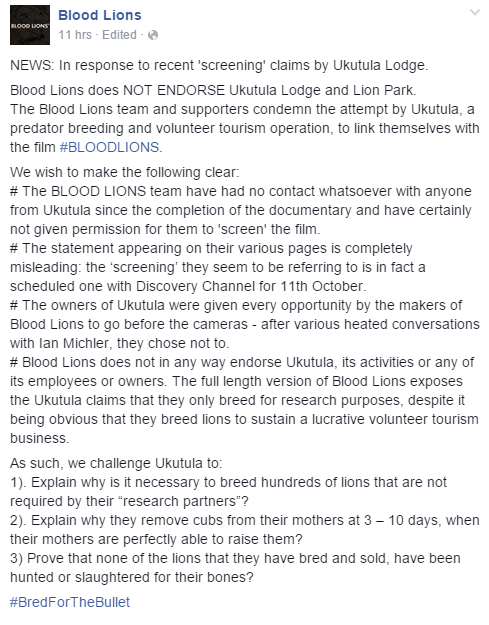
We the [organisation] have thought long and hard in relation to issuing a boycott with regards to Ukutula and their unprofessional practices operating under the guise of species research. International Animal Rescue Foundation Africa has taken in to consideration all aspects of the boycott, the implications this boycott could have on captive breeding and monetary loss. However had there not been evidence that clearly shows trade of Lions and other animals to silent partners, organisations and farms then we’d have not called for a mandatory boycott. Vasts sums of monetary income are coming into this lodge from private buyers of Lions, Cheetahs, Tigers and other animals. The farm doesn’t require funding from foreign tourists that are being lied too, brainwashed and fed misinformation, therefore a boycott must commence to shut this practice down.
Tourists and students that visit the Ukutula Lodge and Lion Park travel from the following countries: Germany; France; Finland; Holland; Denmark; Belgium; Norway; Serbia; Romania; Sweden; United States; Canada; Italy; Australia; New Zealand; Czech Republic; South Africa; Namibia; Zimbabwe; Botswana; Ireland; Portugal; Greece; Thailand; China; Vietnam; Brazil; Peru; Argentina; Mexico; Hawaii; India and Taiwan. There are likely many other countries that tourists and students are encouraged to visit too. However the vast majority are coming in from Holland, Germany, France, United Kingdom, United States, South Africa and Belgium.
Further boycotts will be called for and all boycotts with data and contact details will be posted onto our main environmental news and media site. Boycott information will be communicated to our education and youth team, as well as being communicated to all 6.1 million supporters, 400,000 of which are aligned to our Africans organisation. Any organisation or company that is aligned to Ukutula and is either promoting their services, establishment, funding their team or is actively involved in pseudo education and conservation will also fall into the international boycott too.
Environmental News and Media have identified further third parties that are actively encouraging the promotion of UKUTULA Lion and Game Lodge too identified hereto: Pieter and Brenna, Hartbeespoort and the Crafters Market of which Your Cheetah Spot company are trading images of cubs and adults to the public. We suspect that these images and other crafts sold via the company through the market via felid exploitation are providing a source of income to both the company and Ukutula. This practice is unethical and encouraging the deaths of our wildlife. The University of Pretoria are also supporting the UKUTULA Lion and Game Lodge too. We please ask that international students refrain from visiting this university that are sponsoring the work of UKUTULA. Should we locate any further companies or teaching establishments that are promoting the UKUTULA lodge we’ll be implementing them within our daily news netter ebullition and hereto on this site.
This entire game lodge is not under any circumstances teaching practical or professional conservation. What they are doing is selling animals onto silent and unknown buyers, and promoting/encouraging petting. International Animal Rescue Foundation Africa will furthermore expose tourists, students and anyone that ignores our advice and that of third party NGO’s and investigative teams.. International Animal Rescue Foundation Africa’s role is to now shut this entire establishment down. Alternatively the establishment can immediately stop their pseudo practices and continue “professional conservation” while answering our questions.
WHY ARE WE CALLING FOR A TOURIST AND STUDENT BOYCOTT OF UKUTULA?
International Animal Rescue Foundation Africa are calling for boycotts for the reasons set out hereto:
1. Promotion and interaction of felid cubs. (petting)
2. Evidence that proves cats and other animals allegedly used for research that allegedly live their life out on the grounds, being sold to private and silent buyers, organisations and farms.
3. Evidence that proves the lodge is actively involved within the hunting industry be it directly or indirectly.
4. Failure to answer straightforward and polite questions in relation to the above from ourselves, leading big cat specialists, and third party conservation organisations.
This boycott will be communicated in French, Dutch, German and Spanish. Furthermore we encourage others to please translate to your fellow friends, family, work colleagues and students.
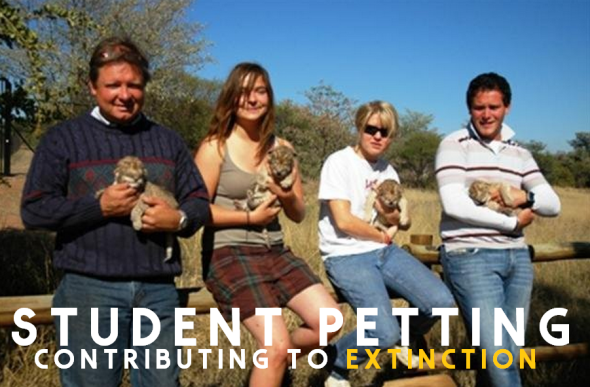
International Animal Rescue Foundation Africa will call this boycott off at anytime should we be provided with the following data.
1. How many cats from the felid family have you bred since founded?
2. How many cubs and other members of the felid family have you sold onto individual buyers, farmers, safaris, and reserves Etc. since founded?
3. To whom have you sold the above animals too under your terms for ECOSCAN? I.e. names of farms, safaris, game reserves, lodges, private hunting services, zoological gardens, individual buyers Etc?
4. Please provide any data to back your claims up that you do not support the slaughter of any animals on your farming lodge?
5. Please provide an explanation as to why you feel its necessary to remove cubs from their mothers when the mothers can rear them quite capably.
6. Are you prepared to allow independent environmental investigation officers to visit your lodge and undertake a TWO YEAR review of your scientific research, monitoring of all captive felids from the hours of 06:00am to 18:00hrs? Monday to Saturday?
7. Do you have any other land or holding facilities that are not mentioned within the public domain?
8. Are you connected to any hunting organisation, safari, reserve or other institution that promotes hunting or sustainable utilization.
STUDENT TOURIST ACCOUNT VIA BLOODLIONS.ORG
British wildlife volunteer, Keeton Hill, shares his experience and findings after his time at Ukutula farm, South Africa.
In 2013 I volunteered at Ukutula, a supposed lion conservation centre outside of Brits, Pretoria, in South Africa. For 6 months afterwards, I spoke of how great the experience was, and about how much good Ukutula were doing. Several weeks after returning from South Africa, I saw a claim that they were involved in the sale of lions for hunting. Initially, I dismissed this claim. However, after seeing more accusations, I decided to do some research to prove these claims wrong. A year and a half later, I am still yet to do so. Instead, I have only seen more and more evidence that I actually volunteered at a farm largely suspected to be involved in the canned hunting industry.
The project was booked through an agency which specialises in volunteering and working abroad. I spent 2 weeks in South Africa looking after lions. At Ukutula, volunteers were told that the lions were removed from their ‘dangerous’ parents, and hand-reared instead for their own safety. We were then told that samples were taken from the 100+ lions on the farm for research purposes, and that where possible, older lions were released into the wild.
During my two week stay, I noted several ways of doing things that I didn’t agree with. For example, there was no permanent staff member in charge of supervising the volunteers who were looking after the cubs. Upon arrival, volunteers were given a brief overview of how to care for them. As of that overview, it was up to the volunteers to decide between them who were to complete what tasks. Any authorisations or approvals were to be sought from the owners, who weren’t always available. This sometimes led to volunteers not knowing how to handle some situations, which then resulted in disagreements between volunteers. For example, some volunteers allowed young children to pet the cubs, whilst others didn’t. Some allowed guests to feed the cubs, others didn’t. There was also an occasion during which the powdered milk supply for the cubs ran out. It was a two hour wait before more was delivered. I also didn’t agree with the cubs being able to be hired for parties and events (which happened several times during my stay). Despite these things, I naively believed everything that we were told about the ‘research’ conducted at the park, and the lion ‘release’ program.
WOULD UKUTULA AND MR STRACHAN PLEASE BE KIND ENOUGH TO PROVE WHERE ALL OF THESE ANIMALS ARE NOW SHOT BY A STUDENT BACK IN 2013 IN THE VIDEO BELOW?
After the accusations against Ukutula were made, and I started my research, it became clear that these claims of releases were simply not true, and that Ukutula was far from what it made itself out to be. I realised that it operated in exactly the same way as canned hunting farms are described as operating. These similarities included a constant stream of cubs being born (there were 9 under the age of 3 months whilst I was there, with more on the way), large groups of tourists petting the cubs throughout the day, walks with older lions, and promises of the eventual release of lions into the wild (of which no evidence has ever been provided).
In order to build up a balanced and comprehensive picture about Ukutula, and find out as much about it as possible, I asked questions to a previous volunteer, a previous member of staff, and the centre’s current owner. I asked both the previous volunteer and previous staff member if they had any reason to believe that the suggestions regarding Ukutula being involved in the canned hunting industry were true. The volunteer told me that they no longer supported the centre, as they had heard several claims that lions were sold from the park (something which the centre themselves later admitted to). The staff member politely declined to comment. I then asked the current owner a series of questions, regarding why they bred so many lions, and when and where their lions are released. I was told that the centre had never claimed to release lions into the wild (which is simply not true, as myself and several other volunteers were told by the centre themselves that they do).
Since this initial realisation, it has only become more and more clear that the Ukutula lies to its volunteers and guests, has never released any lions into the wild, and that they are also more than likely involved in canned hunting. The farm admitted to moving at least 2 lions, Michael and Mandela, to zoos in the United States, and the whereabouts of several lions, such as Kevin, Kylie, Ricky, and Jenny, to name just a few, are now unknown. Attempts at finding out where these lions might be through asking members of the farms staff have proved unsuccessful, always resulting in rudely written replies, which avoid answering the question. For example, when asked the whereabouts of Kevin the lion, an Ukutula employee replied, “none of you(r) damn business”.
When I questioned the farm using an alternative email address to my own, posing as a volunteer interested in working there, they admitted that “lions are relocated in different places”. When I asked, “doesn’t that mean that the people that you send lions to could then sell them onto hunters”, the farm replied that, with a supposed “monitoring system” in the planning, this should mean that they should be “able to react to that”, but “sadly it does not mean there is a 100% guarantee”. I have also since realised that the CITES database shows absolutely no record of any lions being exported from South Africa for release into the wild in any other country. However, what it does show, is mass exports for lion trophies, lion bones, and lion skin.
I have shared my findings and opinions with any volunteers who were at Ukutula with me, and continue to attempt to inform other people who have been to the farm, as well as people that I know personally, about the canned hunting industry. Unfortunately, many previous volunteers refuse to believe about the industry, and defend the farm, often insulting or ignoring the people trying to inform them.
As the canned hunting industry is entirely legal in South Africa, creating awareness and understanding of the industry is vital, as this is one of the only ways to fight against it. The more people who know about canned hunting, the better, as this lessens the amount of unknowing volunteers who believe themselves to be doing good, which then lessens the money that these farms receive. This is why Blood Lions is so important, as it could finally be the large scale exposure of canned hunting that is needed to educate people about the canned hunting industry, as well as maybe even changing the terrible fate of South Africa’s captive-bred lions.
END OF TESTIMONY
One of the most upsetting images is that from 2013 that depicts famous singer Kylie Minouge (pictured below) petting a Cheetah cub at Ukutula that has been removed from its mother (hardly a good example to set to our children or young wildlife conservationists). Many of the students whom travel to work at this Lion and farm lodge are often told that cubs have to be separated from their mothers as the mothers are “allegedly to dangerous” and could attack or do attack the cubs.
This seemingly irresponsible advice comes from a wide range of fake conservationists that work at the facility. One in particular Mr Alan Strachan whom runs the company “Your Cheetah Spot“. Scottish born Mr Strachan that works at the Ukutula Lion and Game Lodge actively encourages people to interact with Cheetah cubs, has been witnessed man-handling the Cheetah cubs, and provides the same excuses as most staff. “The cubs are ill, cannot be released into the wild or are suffering from a wide range of tendon or ligament problems (hence why they can all walk) and look (more than healthy).
If your still thinking on visiting and taking part in the petting of cubs of which you have been told these animals are introduced into the wild. Then ask yourselves this. Why are these animals in the video below that are allegedly “so dangerous” being hand fed, and are more than tame? But more importantly can Ukutula provide evidence to back their claims up that these animals in the video below and depictions above are not dead, or ANY of the females that are sold then bred producing cubs thus not falling under “Ukutula’s ECOSCAN policy” are not then killed for the canned hunting and the trophy hunting industry? Many hunters will try and tell you that this unethical practice is helping to increase populations of Lions. So in that case please do visit the IUCN Red List and look up the Panthera Leo, can you see anywhere in this data that proves such activities are helping Lions or any cat population increases in the wild? OPEN YOUR EYES!
“DON’T BE FOOLED BY CUTENESS OR FOBBED OFF WITH EXCUSES”
Dr Jose C. Depre
Chief Environmental and Botanical Officer.
Chief Executive Officer.
Contributing to Extinction: The Petting Scam.
THE BIG CAT DEBATE PART III
“Conservation is not Petting Cubs or Promoting the Petting Industry”
Over the past week and a half we have been investigating some nine conservation organisations and companies aligned to them organisations within South Africa. As of yesterday we began to make public them questions which were legitimate and fully above board. We have given two related companies known as Your Cheetah Spot and Ukutula Game Lodge over twenty four hours to answer the questions set out here on Facebook within this article. Any professional organisation that isn’t involved within the direct petting or game hunting of threatened species one would then think such questions would quite easily be answerable to place public faith into the domain. Unfortunately within the past hour it seems otherwise.
Your Cheetah Spot a photography and alleged merchandise company, and what appears to be an organisation that is directly aligned with the promotion of petting cubs has not only failed to answer more than straightforward questions, but has evaded them by attacking us with silly nonsense seen hereto. Now we weren’t pointing fingers, nor was we accusing which can be read in all of our posts on Facebook hereto.
While we respect that Your Cheetah Spot is indeed a company their main Facebook imagery and online articles states otherwise. In the image below one can clearly see that the Your Cheetah Spot company is in someway aligned with the recently brought into question Ukutula Game Lodge, that appears to have some two or more Facebook pages online. International Animal Rescue Foundation Africa is a company and not charitable. Meaning that we work for our money. From 2012 to 2015 we have become increasingly suspicions in relation to over ninety South African organisations being “conservation and hunting”.
We equated that over R8.9 BILLION (ZAR) has been pumped into all of the ninety hunting and conservation organisations. However we’ve seen little if any conservation work, reduction in species threat status, reduction in anti poaching or increase of any species they are directly working with in the wild. As we are not a charity but indeed a giver 1/2 of these organisations fell within our (Funding African and Asian Wildlife Survival) program. While we have not provided monetary income to Your Cheetah Spot or Ukutula Game Lodge, we have directly and indirectly promoted their services or organisation[s] (2013-2014). That in turn has technically brought our company into disrepute in regards to malpractice and public misinformation, furthermore it was somewhat more embarrassing that members of the public also pointed this out to us too, and not forgetting some twelve key conservation experts.
The image below shows that both Your Cheetah Spot and Ukutula Game Lodge are related in one way or the other.
Ukutula Lodge does go under other names of Facebook too such as Ukutula Game Lodge Etc. On viewing Your Cheetah Spot company we were somewhat concerned with the vast amount of small cubs that are in our eyes being petted by the public, or by the staff in general from which we believe is at the Ukutula Game Lodge. Please view the images below. Please also note that it has been alleged that some of these animals are “sick and unwell” and cannot be released into the wild. We our now bringing that into question.
The male in the image above is known as a wildlife photographer and conservation researcher, of which he also with his students, friends and family helps at the Cheetah Research Center, while meeting up with members of the public at the Ukutula Game Lodge or Ukutula Lodge. When putting questions to Scottish born Alan Strachan and the user on the Your Cheetah Spot Facebook page we was then made aware of the current unprofessional behavior of Ukutula Game Lodge. Its at this very lodge that our suspicions have yet again arisen, of which you can view in the images below.
Interestingly when viewing more data on Ukutula Game Lodge we were somewhat perplexed as to how many big cats this farm is currently holding of which it states “is research”. Even more worrying is that the vast majority of these cats are/or were all cubs, all of which are being bred on a “game farm”. Please view the data below.
Now just to remind the millions of readers that tune into our environmental investigations news site what a game farm is, we have made it very simple to read and understand for you to come to your own conclusions. Please see the image below.
A further suspicion that was then immediately raised by the External Affairs investigative team was the vast majority of friends on Mr Strachan’s Facebook friends list that are all (holding or petting) cubs, yet there seems to be no mothers in sight, please see the image below.
The list is pretty endless of which you can view more here
Any good professional conservation teacher, conservation organisation, research center, or reserve would not under any circumstances allow the direct petting of any big cat cubs. The potential for virus and disease to emerge and not forgetting the removal of the cats natural hunting instincts would severely be detrimental to the animals health. So on viewing the two parties being that The Ukutula Game Lodge and Your Cheetah Spot company that boasts years of experience then why are we seeing such behavior? Furthermore on questioning Your Cheetah Spot company they categorically stated that they hadn’t released any animals in to wild since [2007]. Yet they also stated to the CEO that they were just a simple photography and gift company.
International Animal Rescue Foundation Africa asked some nine very basic and straight forward easy to answer questions. The organisation has waited and waited, the questions were stern but not abusive. However it would appear that on asking such straightforward questions “Your Cheetah Spot company” has not only become abusive but have shown just how hateful of homosexuals they are (again clutching at straws and trying to turn the table onto us). See the screen shots below.
So when basic very polite questions are asked not only are we spat at with trolling nonsense from hunters and deluded pseudo activists whom have created these articles in the image above, the Chief Executive Officer is then spat more abuse at insinuating that he is gay and obviously goes under many other names too. And as yet, still there is no answers to our questions.
Linda whom runs the Facebook page Your Cheetah Spot stated that the vast majority of these animals cannot be released back into the wild. The kind lady also stated that many animals are sick or injured. Furthermore Linda stated that there is not enough room to simply release Cheetahs back into the wild within South Africa. As a more than competent and professional environmental company there is room, and there are also many active reintroduction programs over the border. In our own opinion these animals are not being released as then that would mean a loss of revenue. Furthermore if these animals are being bred for science, what happens to them after the research is up. Lastly as you may all remember Cecil? Cecil was one of many Lions that the Oxford University Lion Research Center studied, oddly IN THE WILD!
Reintroduction programs have been very operational within Swaziland for some years. Furthermore South Africa is not detached from the continent. Bordering you have Botswana, Namibia, Zimbabwe, Mozambique and finally Lesotho with Swaziland in the far right. So the excuse that these “many small cubs” that are new born and are most certainly not sick, old, injured (in most cases) cannot be reared in accordance to a professional captive breeding program is utter nonsense. Just to remind you - Linda whom is aligned with the You Cheetah Spot company stated that the last release was back in 2007 of any Cheetahs which we do believe was in the KWN.
A further concern is that Linda stated Alan Strachan (experienced photographer and author) has many contacts within the Cheetah Breeding theater, see image below.
The comment above is just a contradiction of what is being viewed at the Ukutula Game Lodge of which Alan Strachan visits regularly such as “you have to make sure that there is very little contact with humans” “The last prey release was back in 2007”. If these contradictions do not spring up red flags to you then they should. Swaziland has been the center for many Cheetah releases over the years as listed on the International Union for the Conservation of Nature’s website. Furthermore the sheer fact that in the vast majority of Mr Strachan’s images on his Facebook profile that depict “cub petting” and on their very own Facebook page is also somewhat concerning.
THE LIES BREEDING AND RESEARCH CENTERS TELL YOU
Below is a list of common lies or misinformation breeding, research and farming centers will try their utmost best to tell you. However at the end of the day its down to you to undertake your own research. Why are there so many cubs, why have there never been any releases of animals into the wild, why are there never no mothers seen with the cubs, why did the breeder or the supporter of a breeder state that these animals cannot be released back into the wild in South Africa..The simple answer to that question would be (mass loss of profit). Again we’re not putting words into your mouths, we are though asking you to please open your eyes, question, look around.
Breeders who charge the public to pet and take photos with young tiger, lion, cheetah or leopard cubs tell venues and customers some or all of the following ‘misinformation which is’:
1) That the exhibitors are “rescuers” and operate “sanctuaries”
2) That the cubs have a good life while being used to make money:
a) They enjoy being carted around the country in a semi and repeatedly awakened and handled by dozens of people all day
b) That blowing in the cubs face “calms” them down
c) That dangling them by holding under their front arms and bouncing them up and down “resets” them cubs at the mall
Cubs at the mall always = cub abuse
d) That close up photos with flash does not harm the cubs
3) That it is safe for the cubs and for humans, and legal, to allow contact with cubs from when they are only a few weeks old to when they are six months or more old.
4) That the exhibitor must keep constantly breeding and using the cubs to make money because that is the only way he can support the adult animals he keeps.
5) That the exhibitor is doing this to promote conservation in the wild.
6) That the exhibitor is teaching people not to have exotic animals as pets
And the biggest lie of all:
7) That the cubs will have good homes after they get too big to be used to make money from petting.
The images and evidence that is seen on one of the nine alleged conservation organisations that are either directly or indirectly involved in the promoting of petting or in this case “science and research”. Have shown little evidence of anyone of these animals actually being released into their native wild.
We DO NOT buy the excuse that states there is little room in South Africa to release these animals back into their native wild. Africa is a continent and South Africa is most certainly not detached from neighboring countries. South Africa borders Botswana, Namibia, Zimbabwe, Mozambique, Lesotho and Swaziland. Swaziland is one country of particular interest as many Cheetah reintroduction programs are happening within this country. The Cheetah Spot company also made public that Mr Strachen has many contacts with “Cheetah breeders” so why are we not seeing reintroduction, but more ‘petting’ of which these images are directly promoting the petting industry which in turn directly promotes the canned and non-canned hunting industry.
If you would like to know more about felid petting one can view the link here supplied by the Big Cat Rescue.
So as our questions haven’t been answered then we’ll reprint them here in a more orderly and professional fashion. On hitting the publish button the news letter will be sent to over 2,000 subscribers and over 6.1 million supporters respectfully.
- What relation does Mr Strachan and Your Cheetah Spot company have in relation to the Ukutala Game Lodge?
- Why are there so many cubs being shown on the Ukutala Game Lodge and Your Cheetah Spot company that are not unwell but more than healthy?
- Why are there so many cubs with no mothers being petted at the Ukutala Game Lodge, and where are their mothers?
- What happens to the cubs being shown on the Your Cheetah Spot company and Ukutala Lodge when you have reached maximum holding capacity?
- From reading, Your Cheetah Spot company states its nothing more than a photography and merchandise company. The company stated that they have only managed to release some Cheetahs into the wild back in 2007. So from 2007 to date you’ve obviously been in contact with more cubs, so how many animals are you holding on this farm, and where are the excess going too, one cannot just continue breeding and not releasing they are obviously going somewhere?
- Are you Ukutula and Your Cheetah Spot company involved in game or canned hunting?
- Why are you “Your Cheetah Spot” company directly encouraging through photography the petting industry but then contradict yourselves by stating that these animals must have the bare minimal human contact?
- Are both Your Cheetah Spot company and Ukutala Game Lodge aware of the health implications to these animals via the direct handling, man-handling and petting of cubs and elders?
- Why does the Your Cheetah Spot company that stated 1. They are just a merchandise company then 2. agreed they are working directly with these animals believe that South Africa is the only country that these animals can be released into?
- Will you Your Cheetah Spot company and Ukutula Game Lodge make public the amount of animals that you have allegedly helped, released into the wild and how many have been deliberately bred?
- Why when questioned did you not answer the questions highlighted but then some 14 hours later placed untrue, derogatory and misleading data into the public domain asking people to share. When all we did was obtain the information from your own sites, your own staff, friends and online data? No professional organisation or individual would behave in that manner?
- How much money are Your Cheetah Spot Company directly making from petting big cats and cubs?
- How much money are Ukutala Game Lodge making from the direct petting of big cats and cubs, and where is this money going too. Why are you also promoting the “interaction with very healthy cubs” to foreign tourists of which is commonly known as a “Lion Petting Farm aka Hunting Industry”?
The next time you want to abuse us you may want to remember that we are not propagating misleading lies about you. The data above has derived directly from you. All we have done is placed that all together, reviewed it and come to the conclusion that from questions 1-13 both of you are in some way directly involved in the petting industry which has direct relations to the hunting industry.
For now we’re going to leave our concerns at this. We will though be going through all organisations and individuals aligned with us and, if found to be exploitation any animals will be removed and exposed by us. Lastly when you have emigrated to our country please respect our natural heritage.
External Affairs Department
externalaffairs@international-animalrescue-foundation.org.uk
Environmental and Animal Abuse Investigations Authority Europa.
EXTERNAL AFFAIRS HEAD OFFICERS:
Jose C. Depre: Chief Executive Officer.
Johan Le roux: Anti Poaching / Illegal Animal Parts Trade Head Investigator.
Michal Jooste: Endangered Species Watch.
Pitier Van rens den: Chief Environmental Officer and Emergency Rescue.

